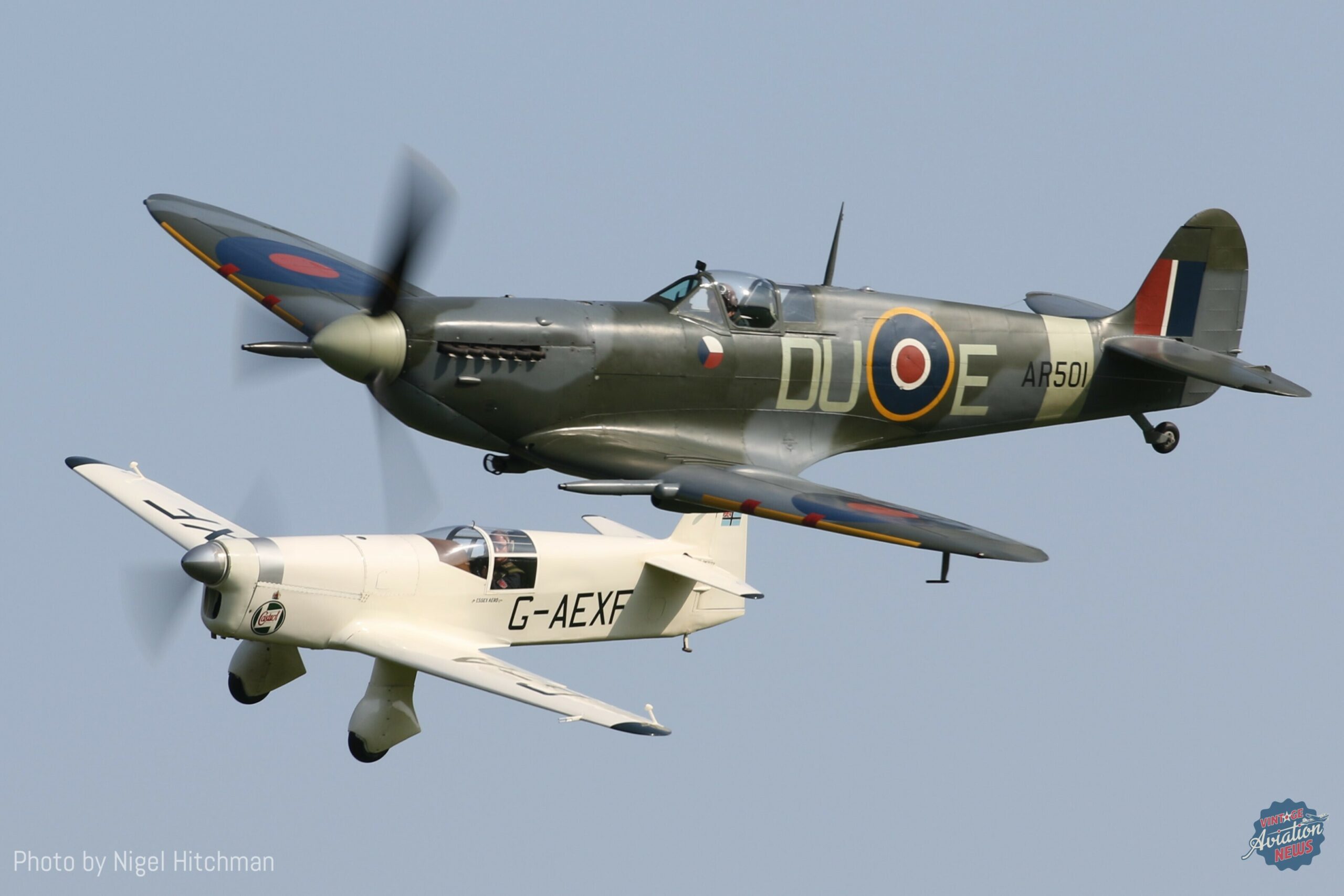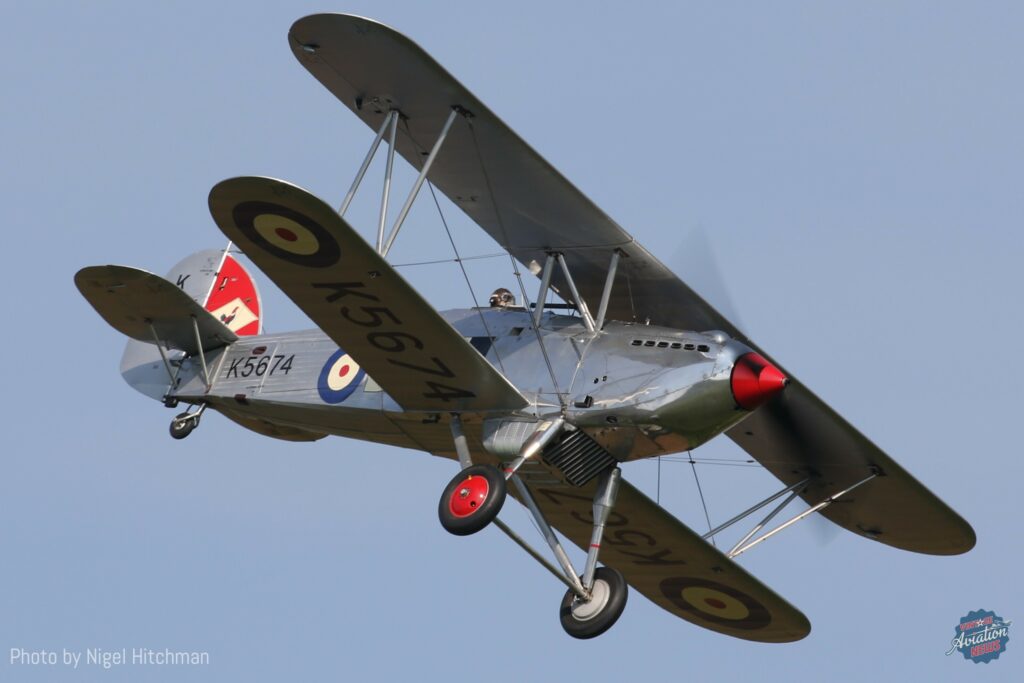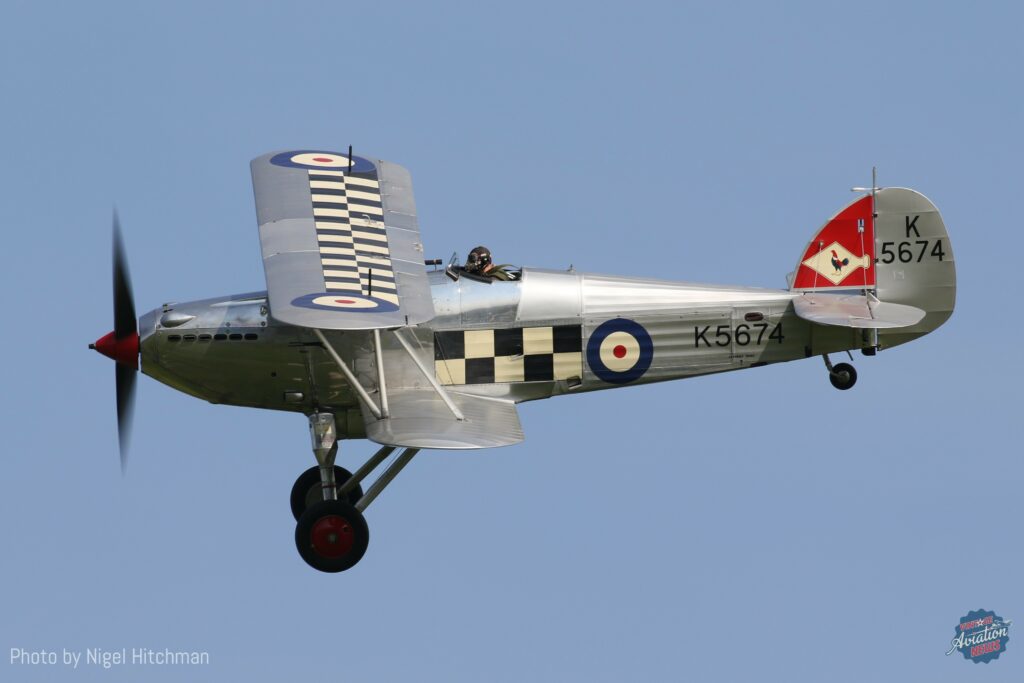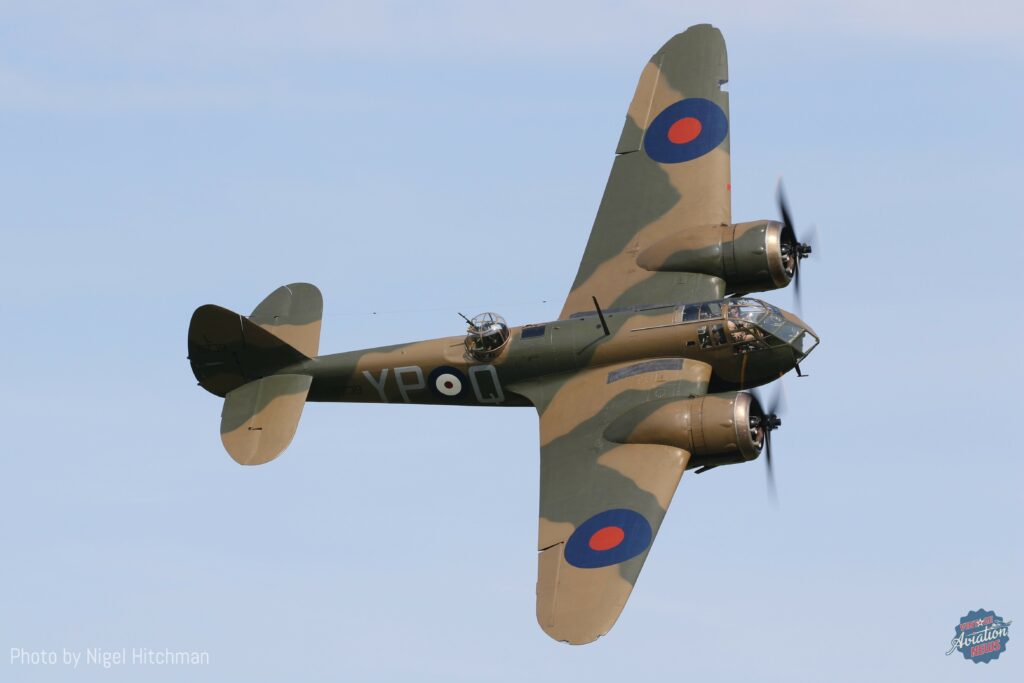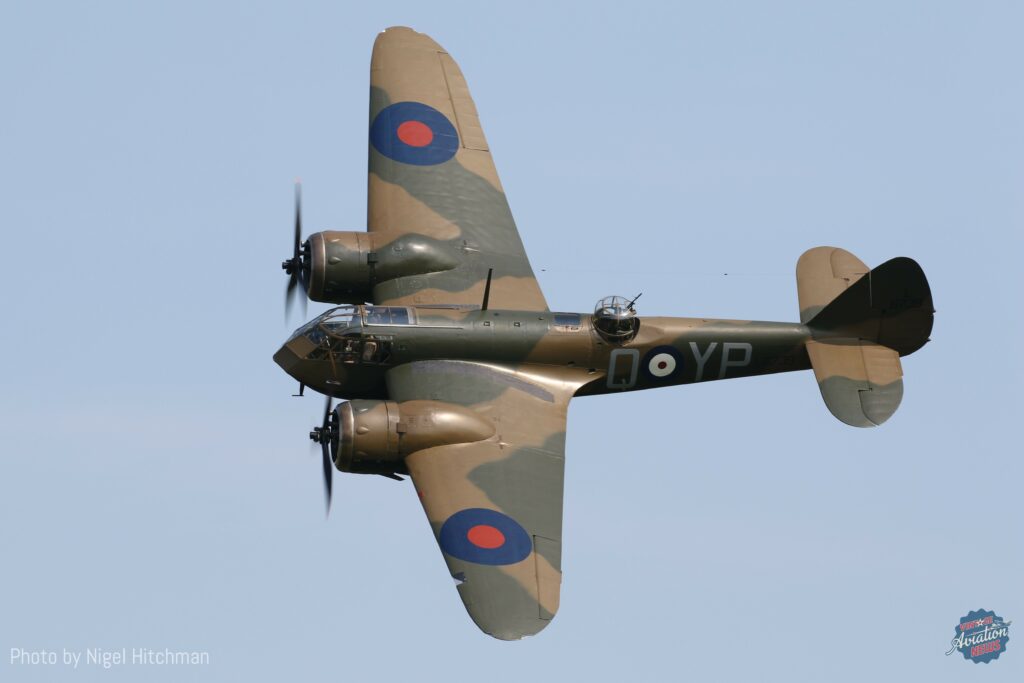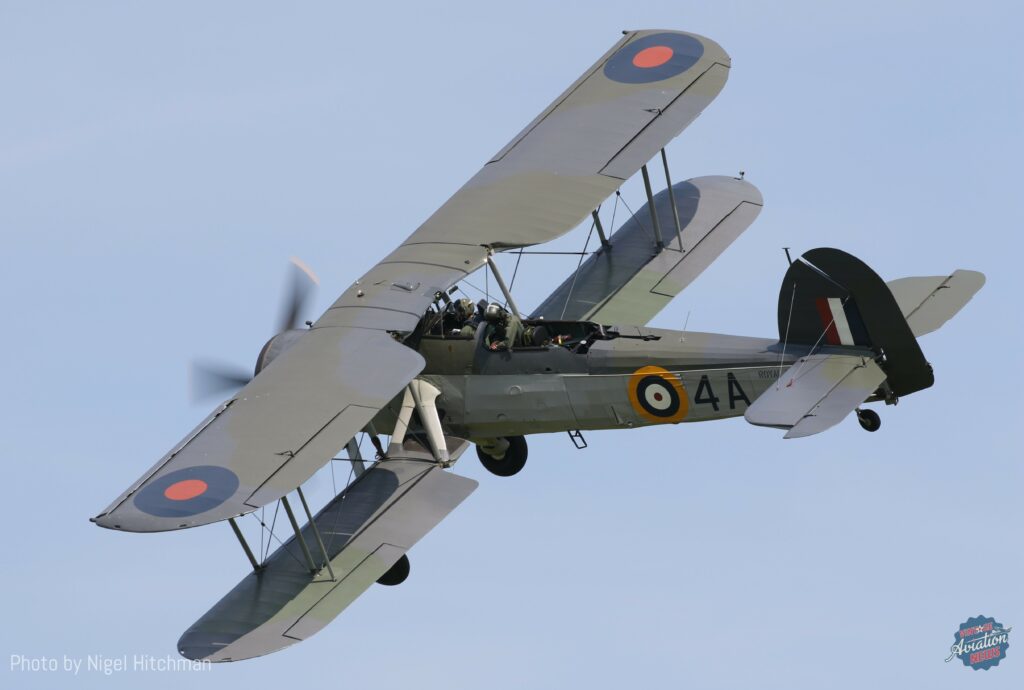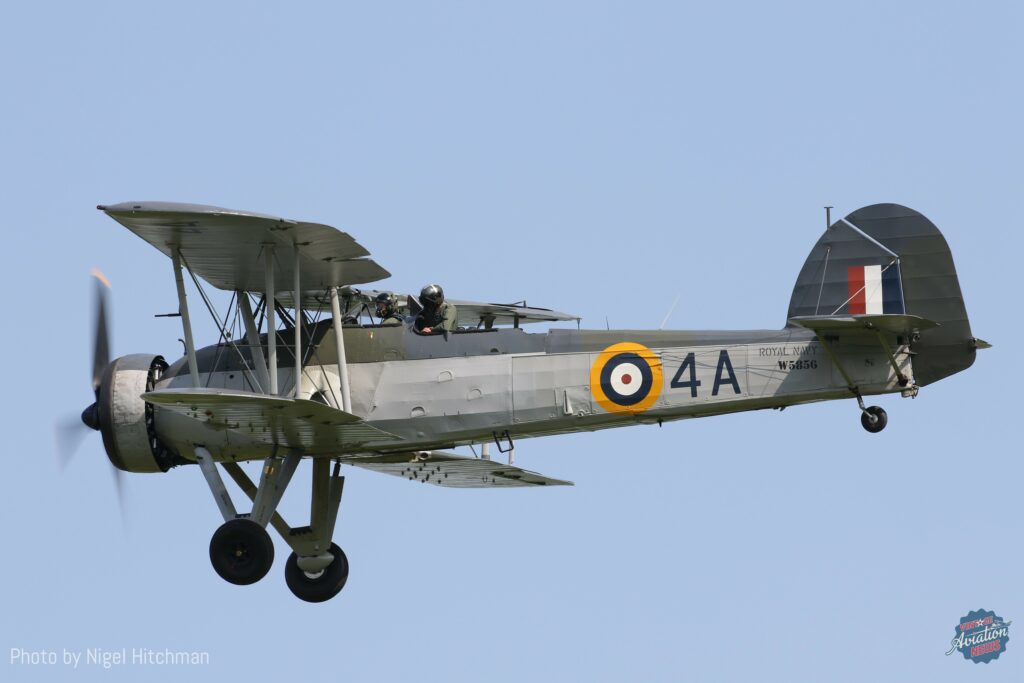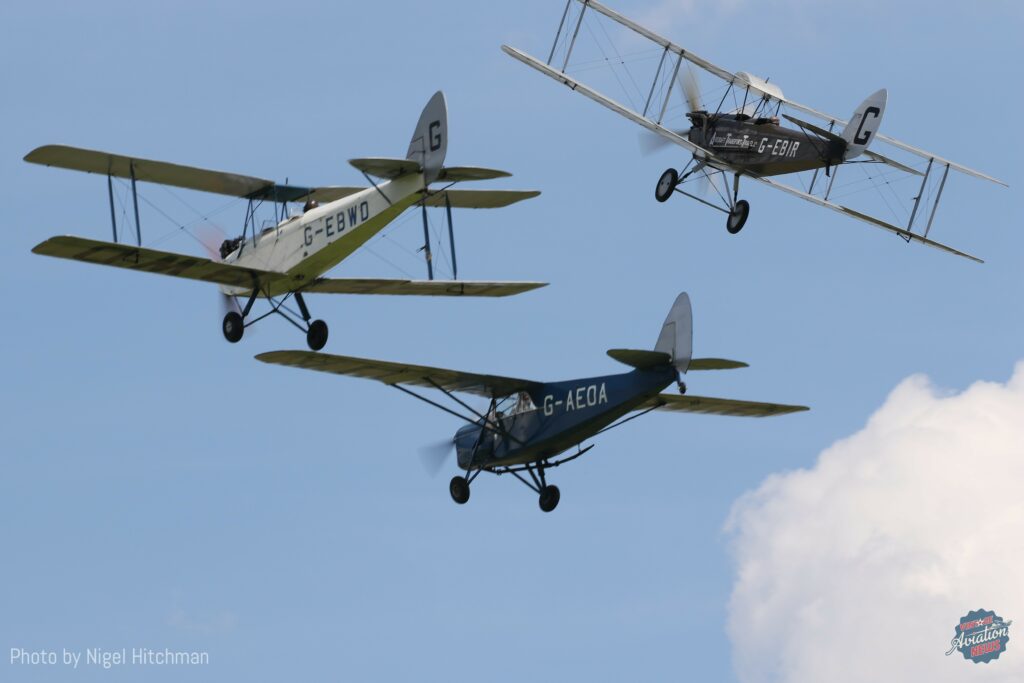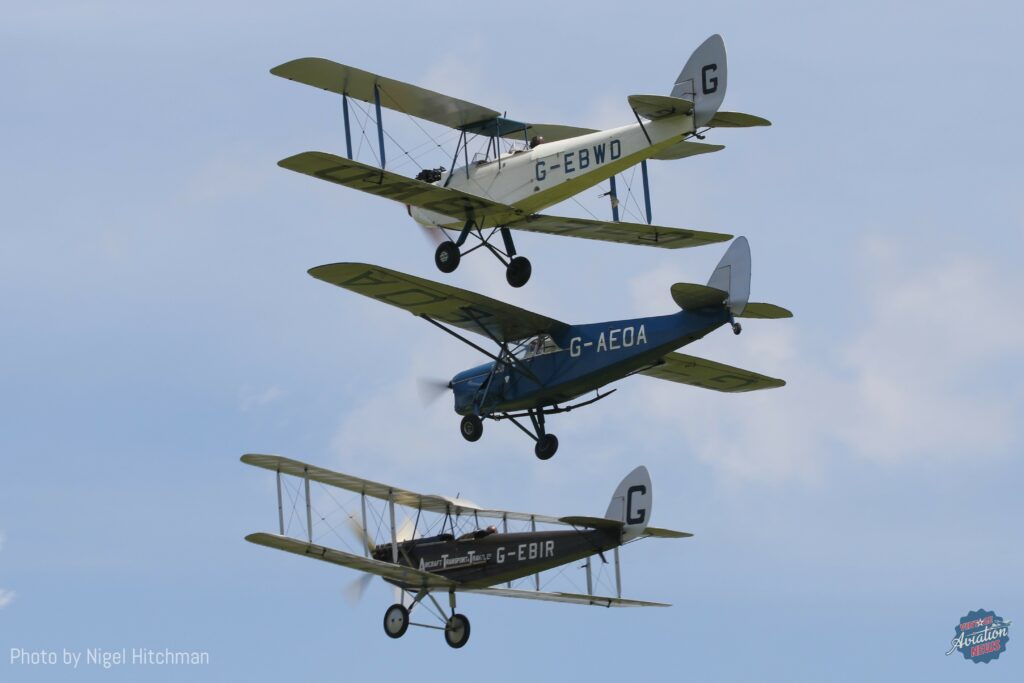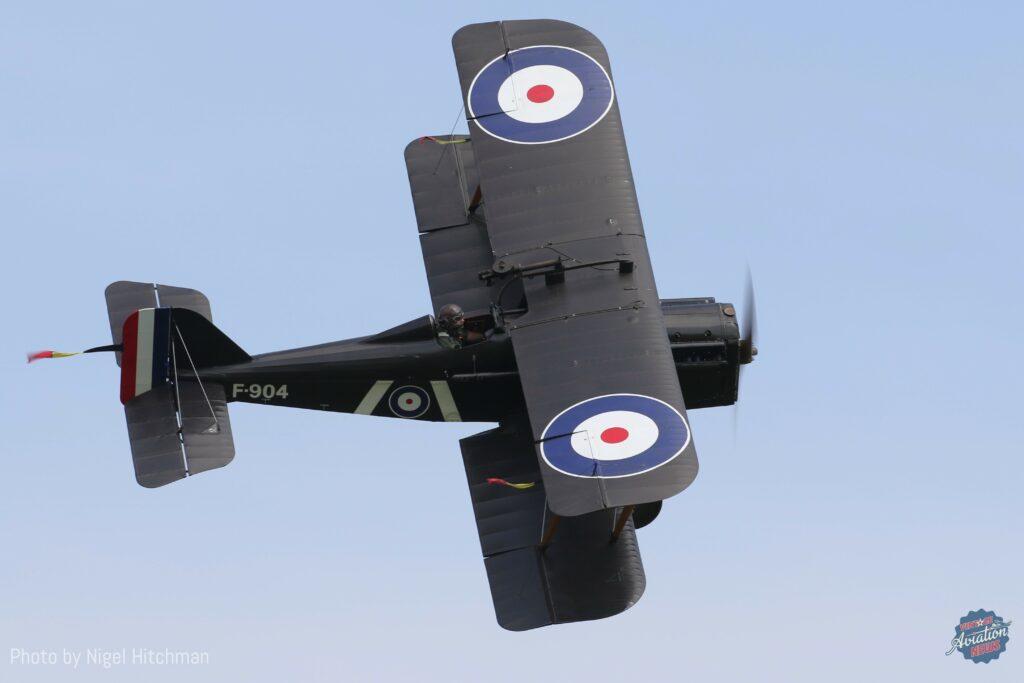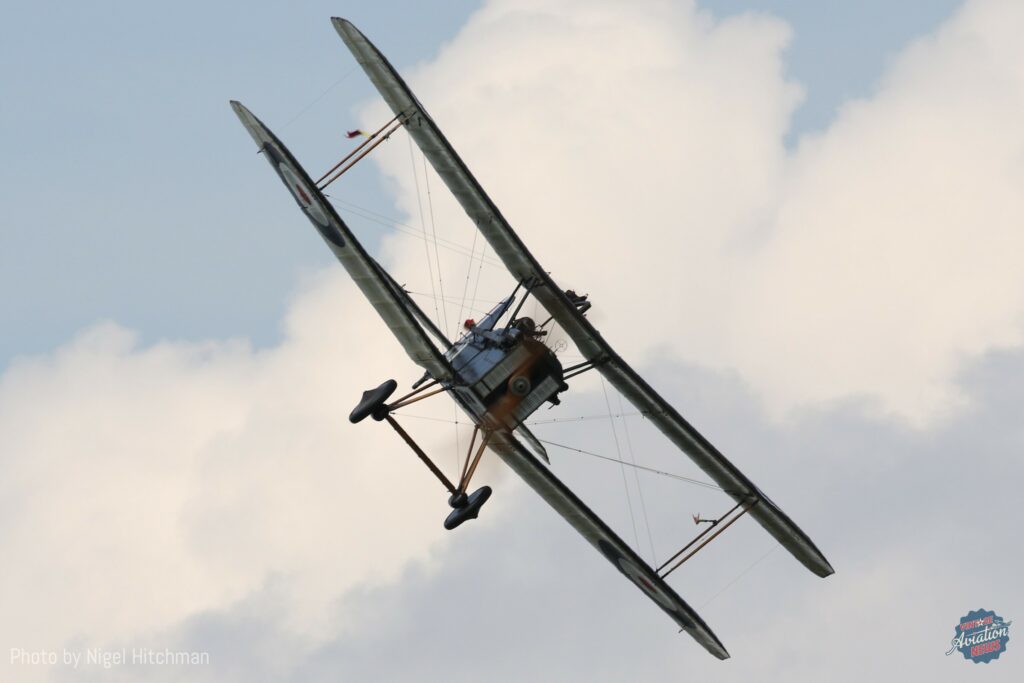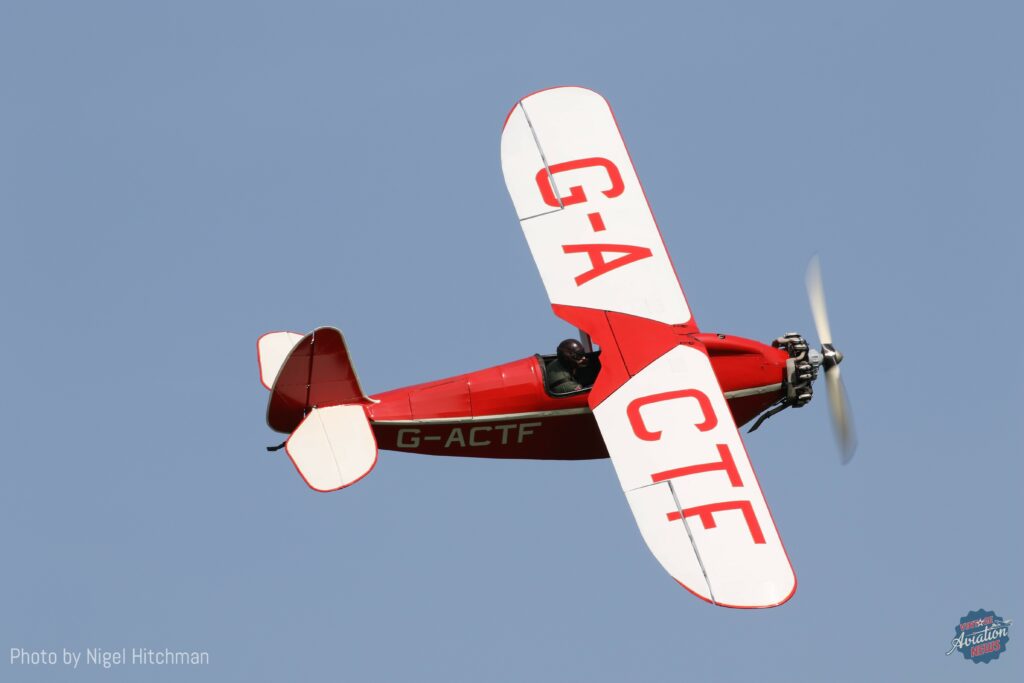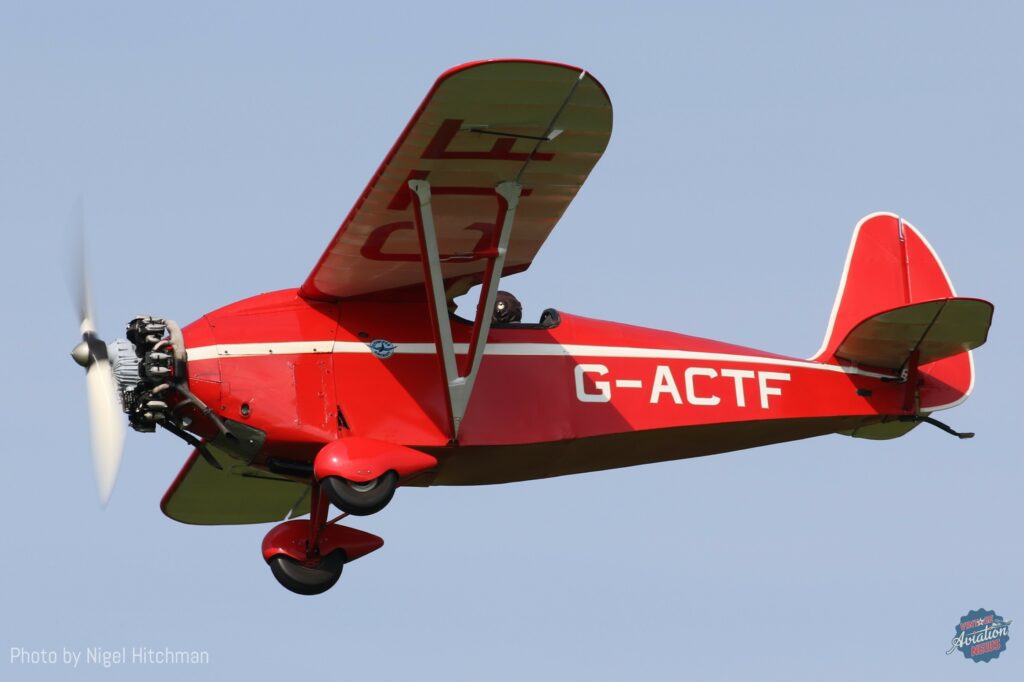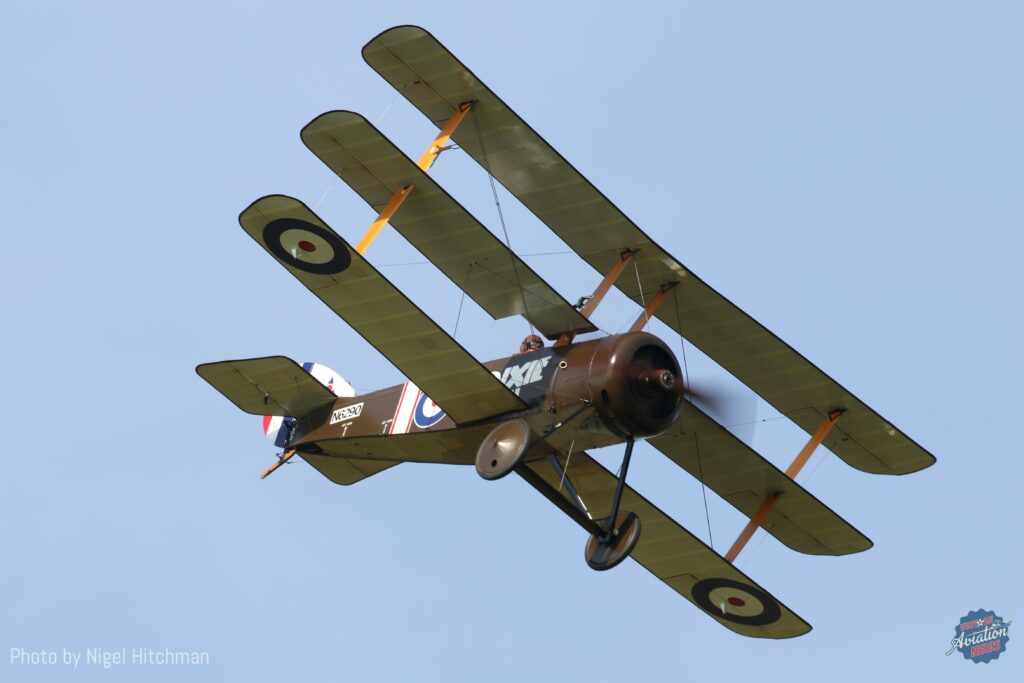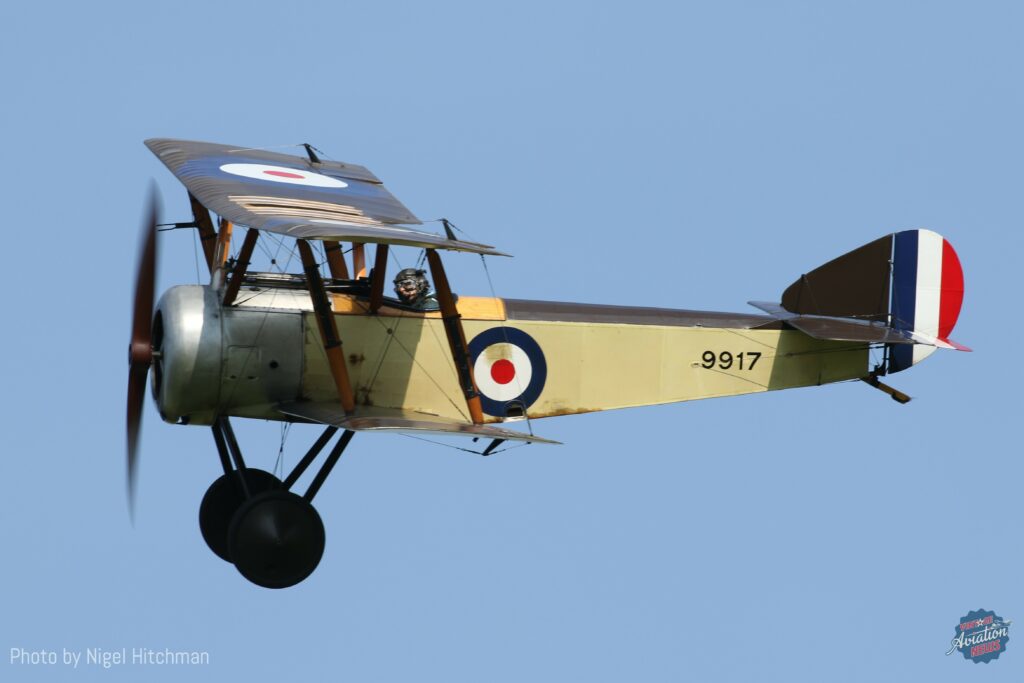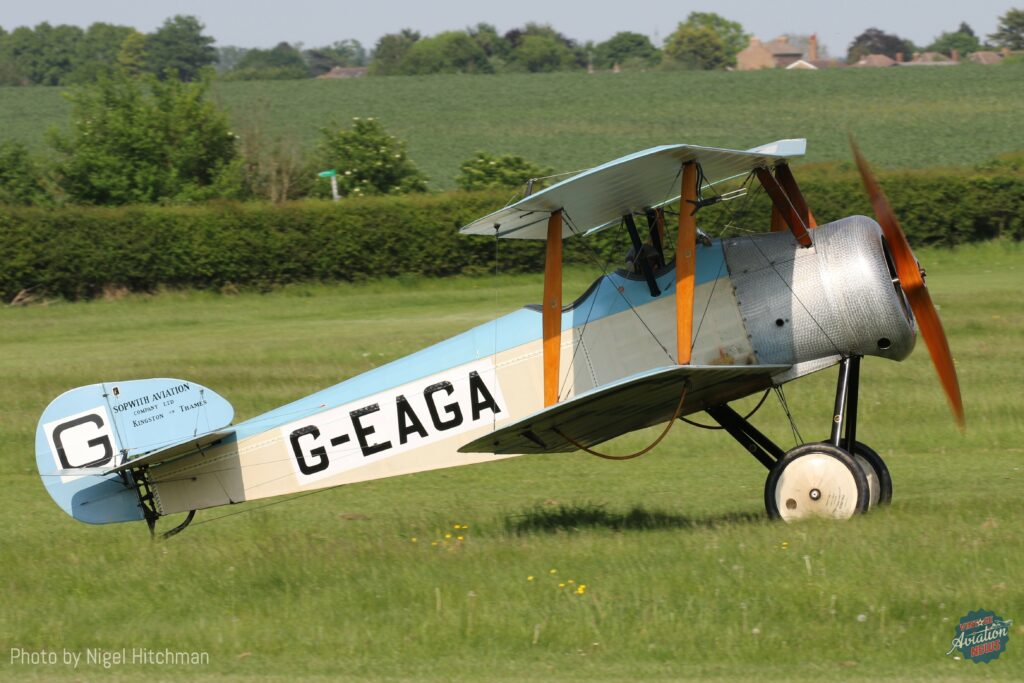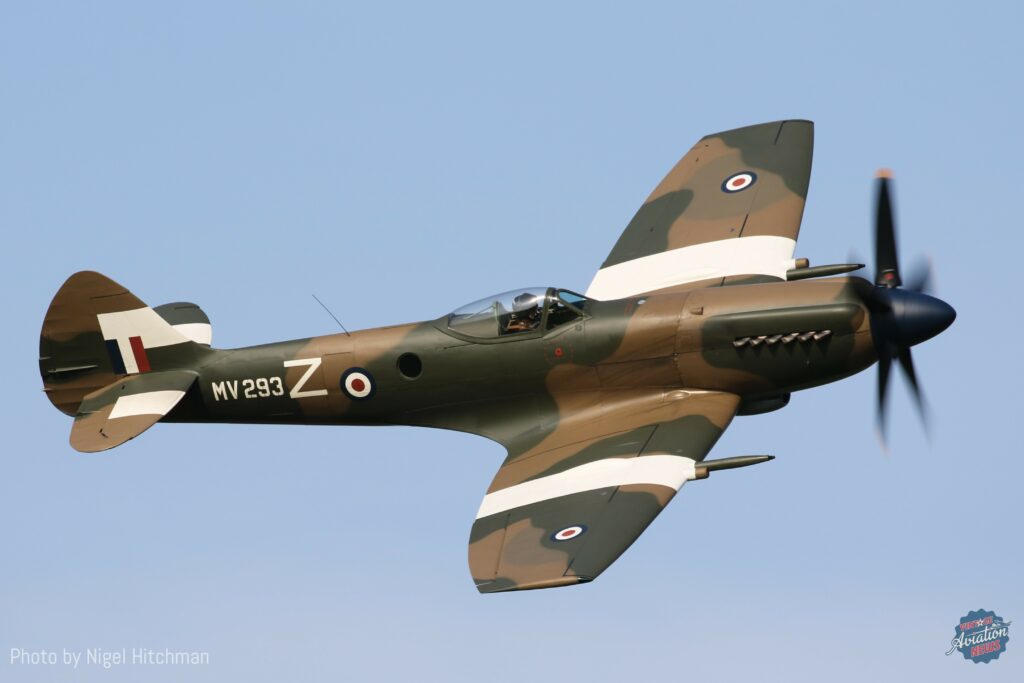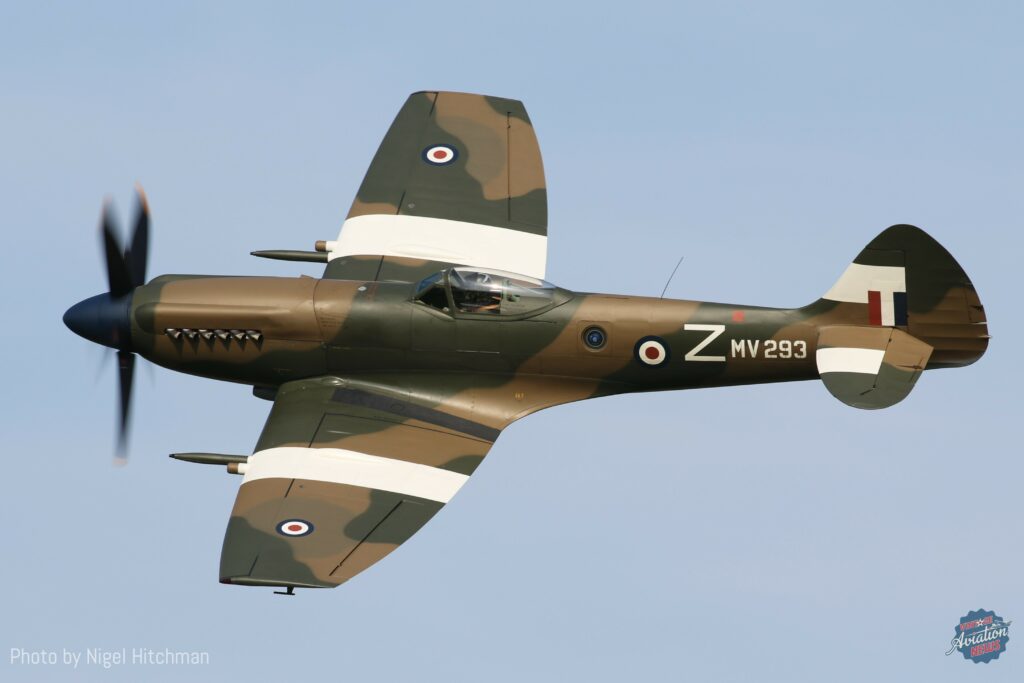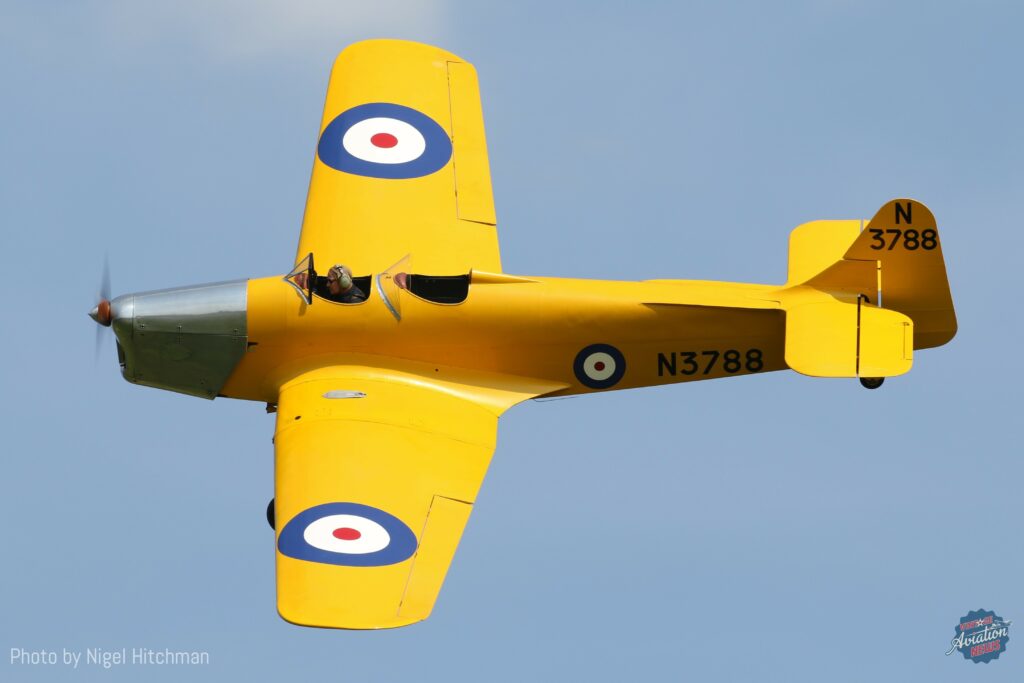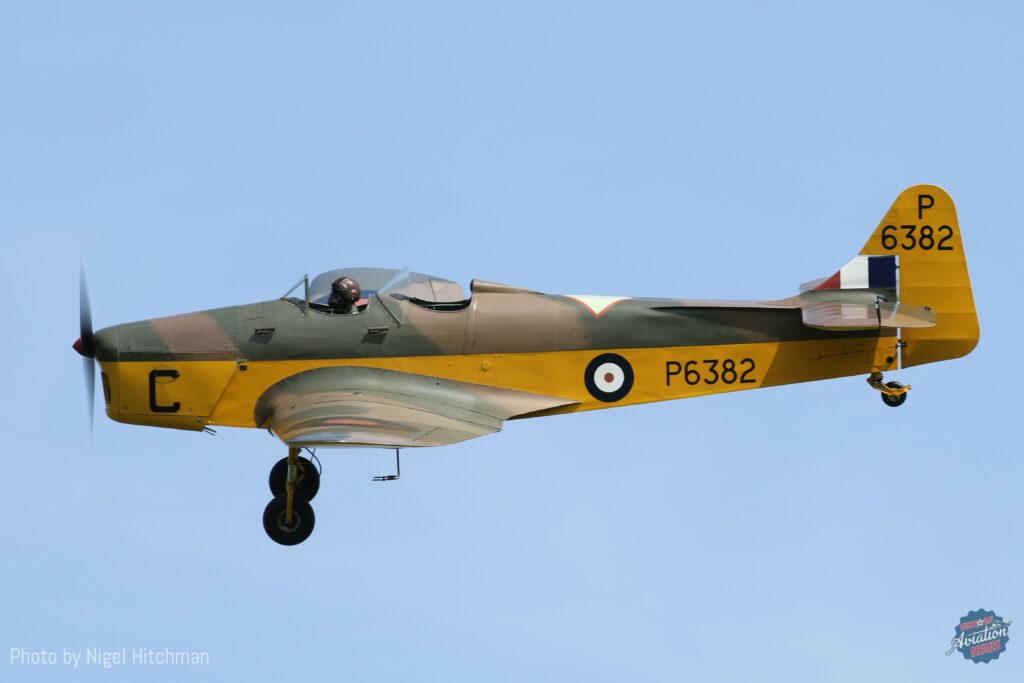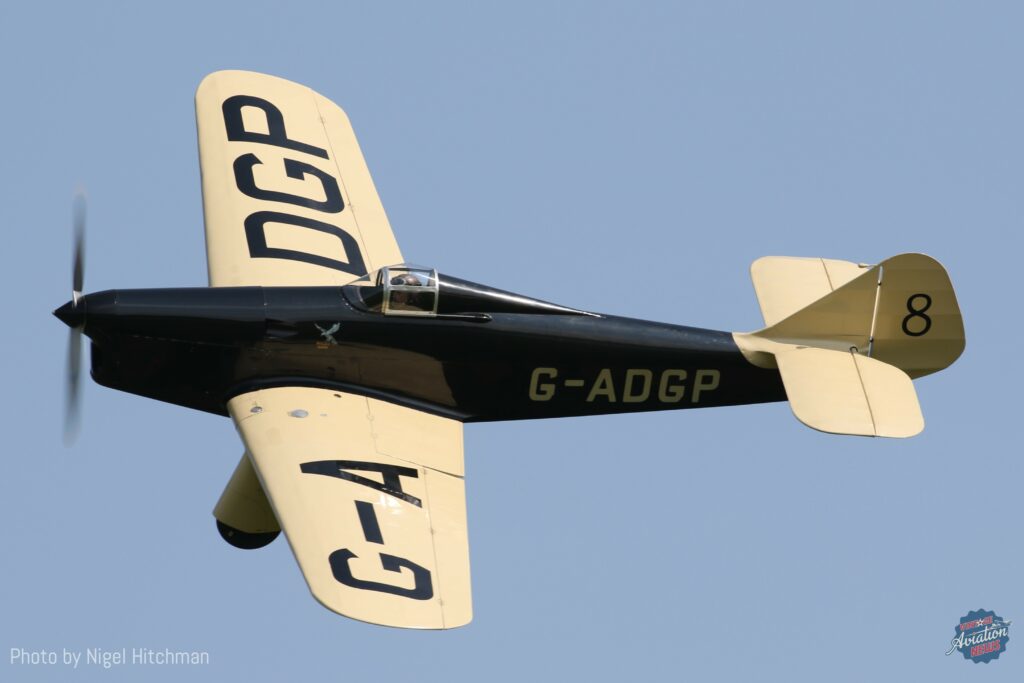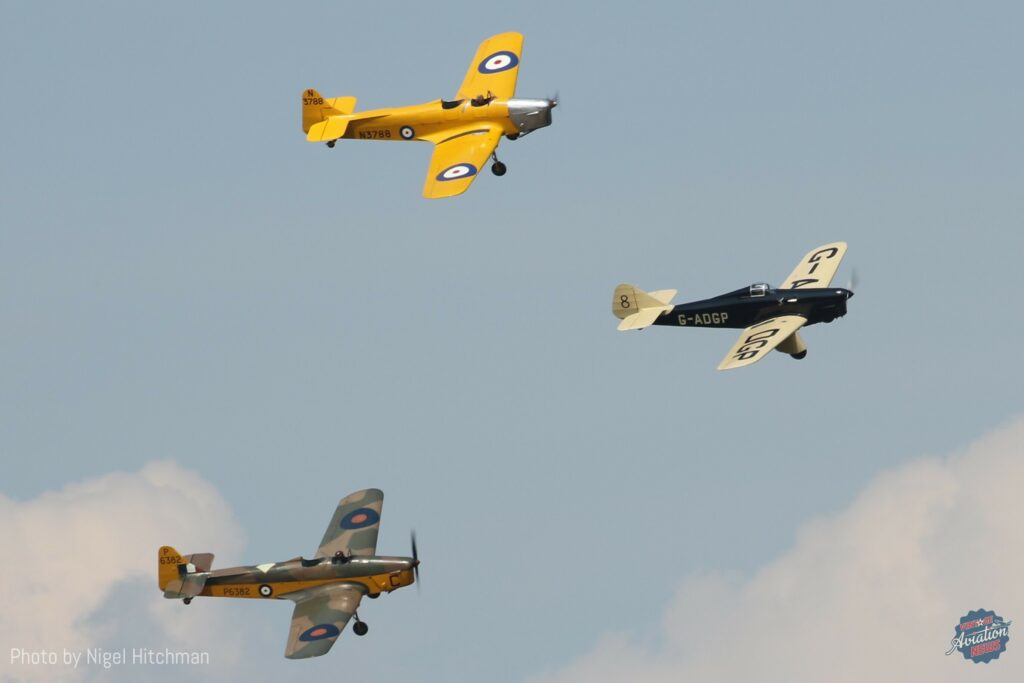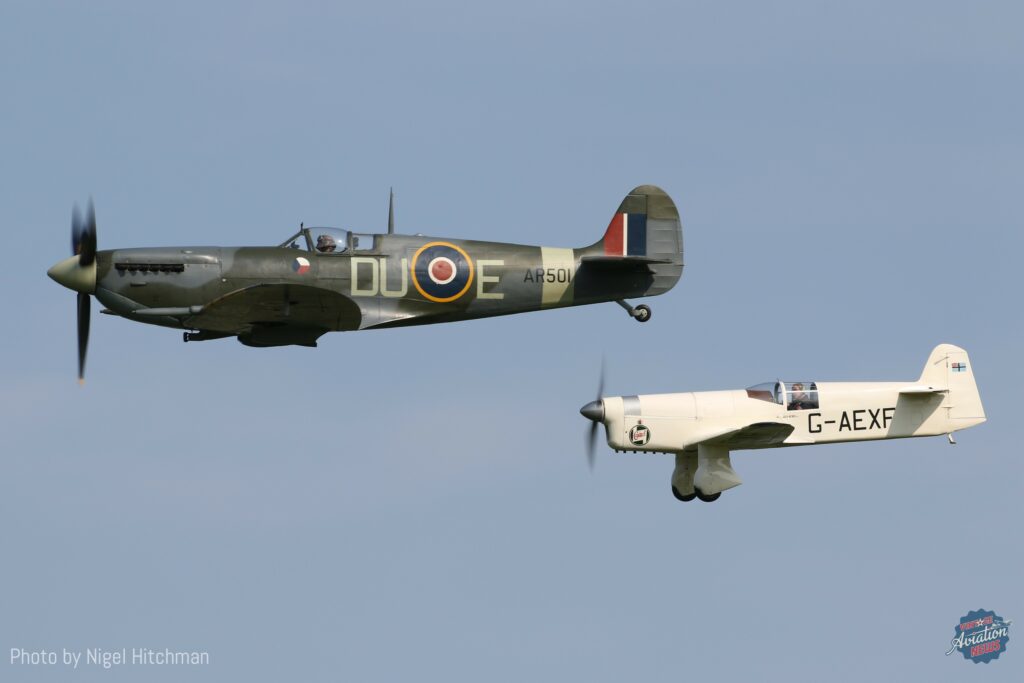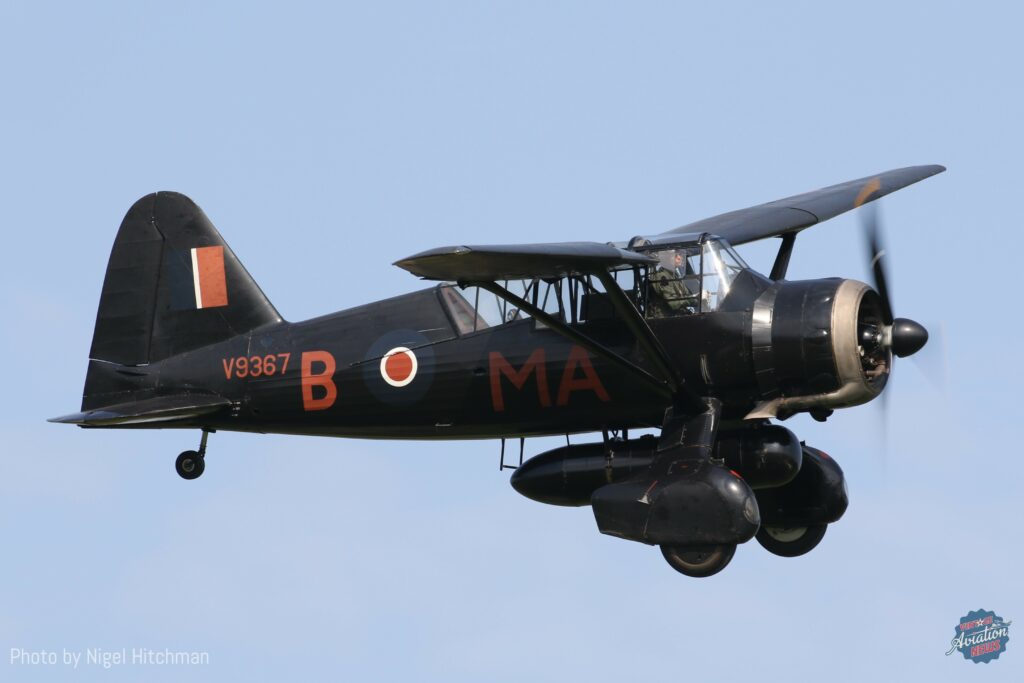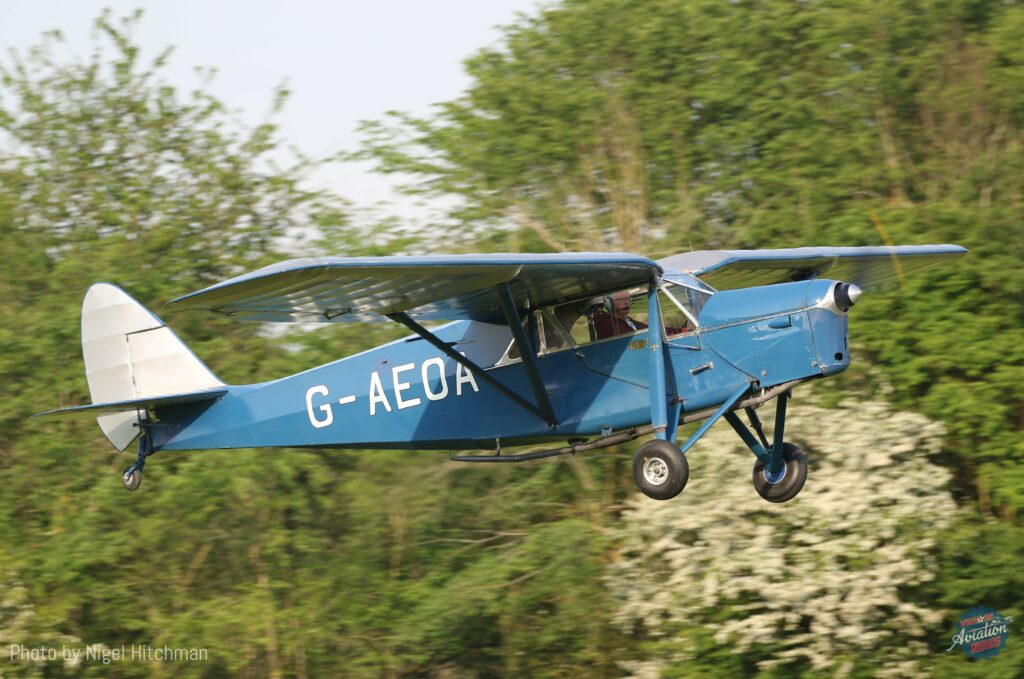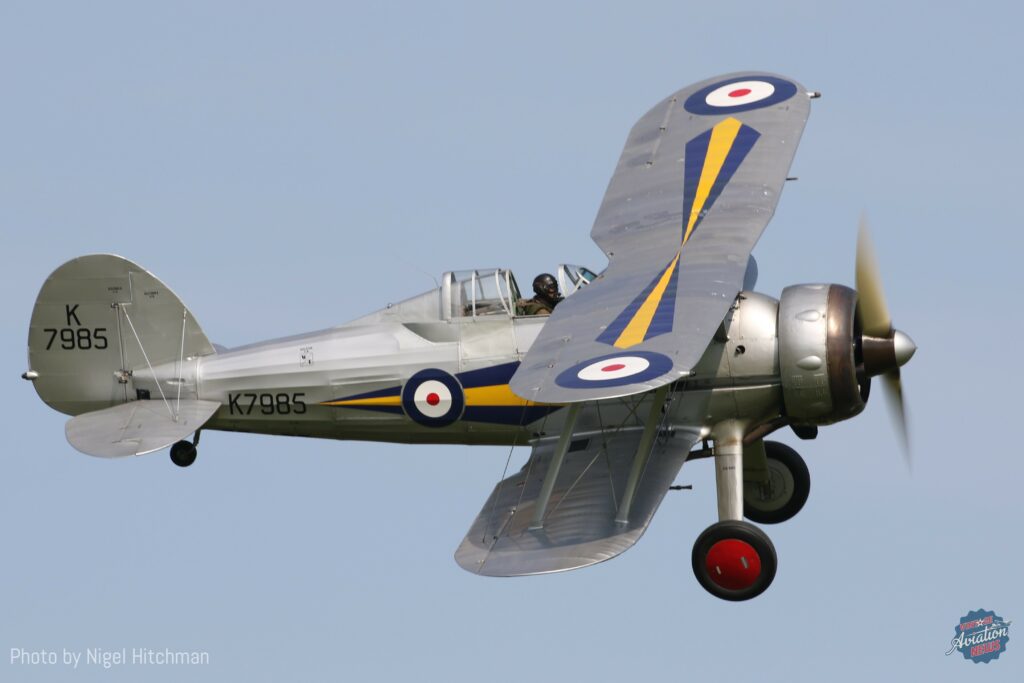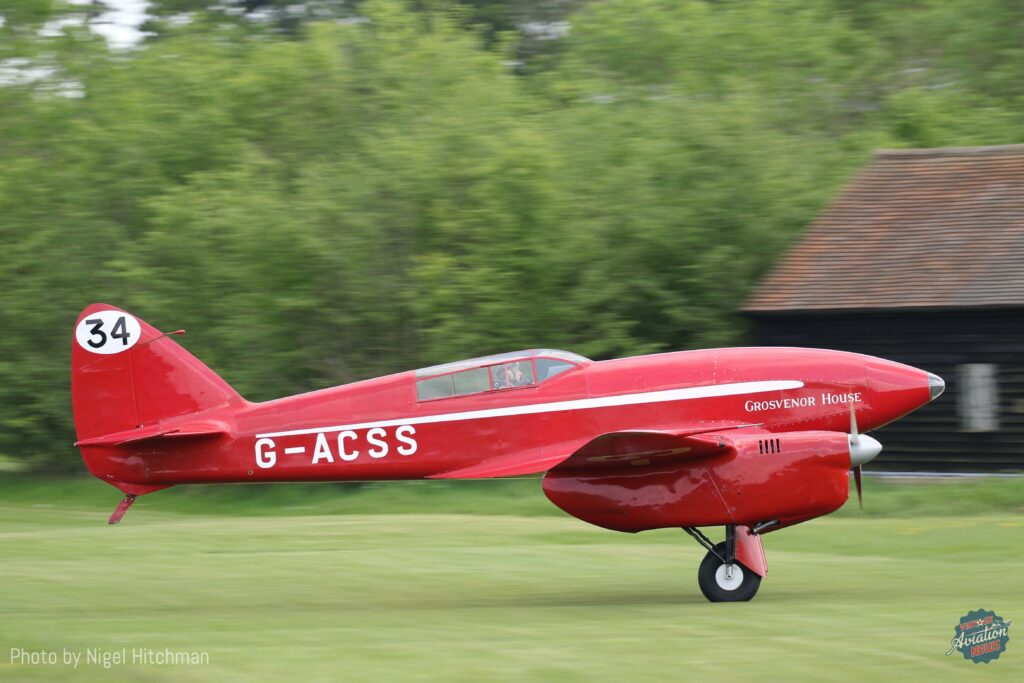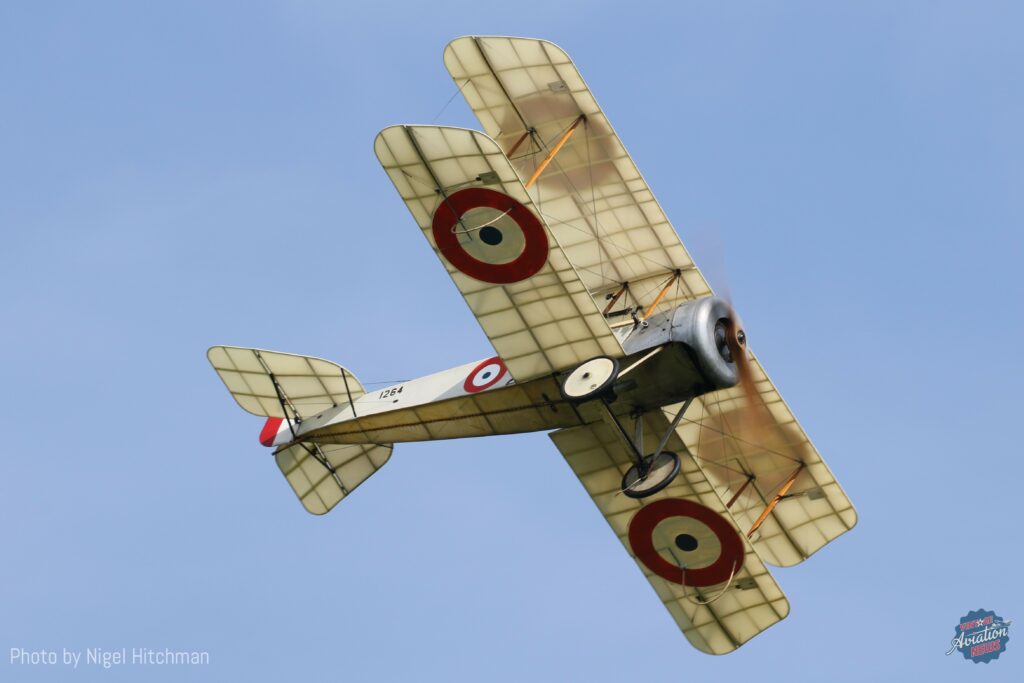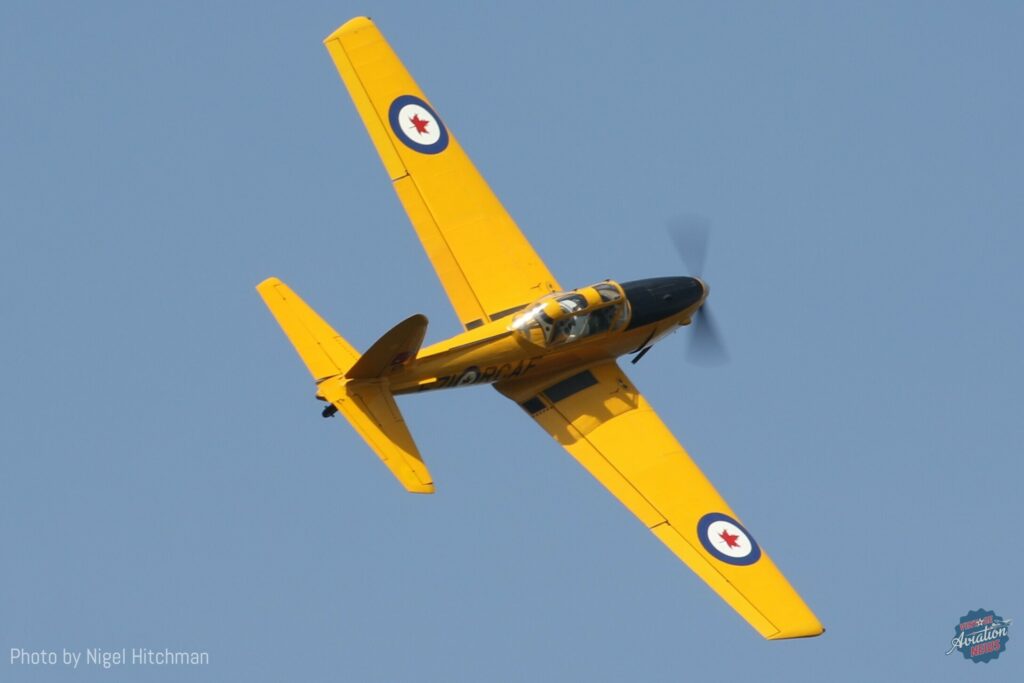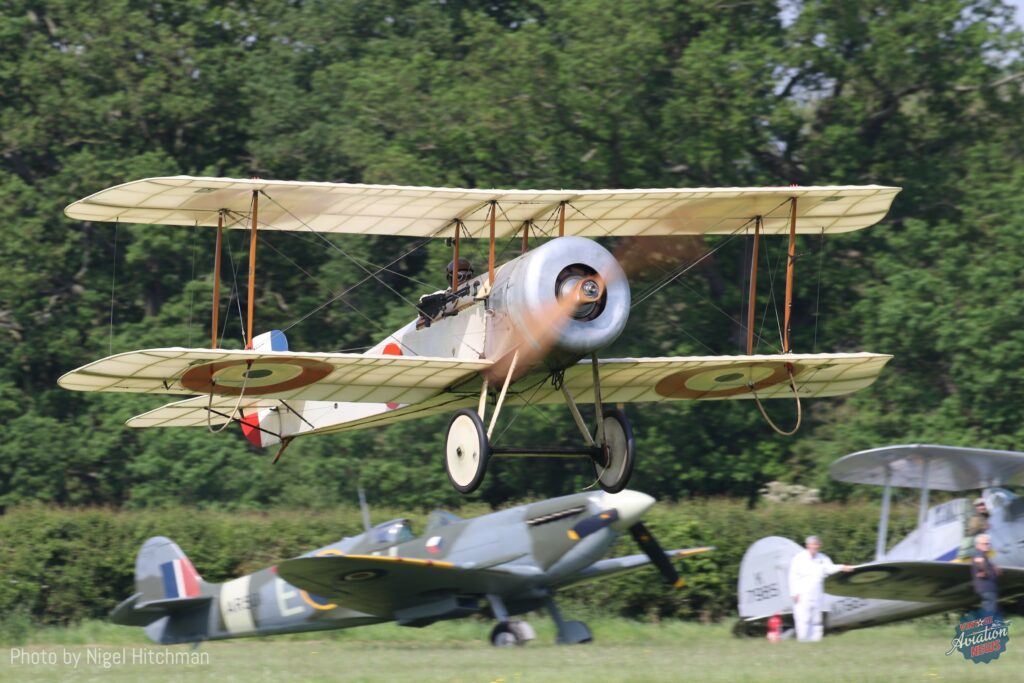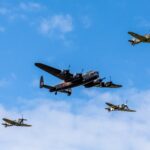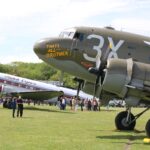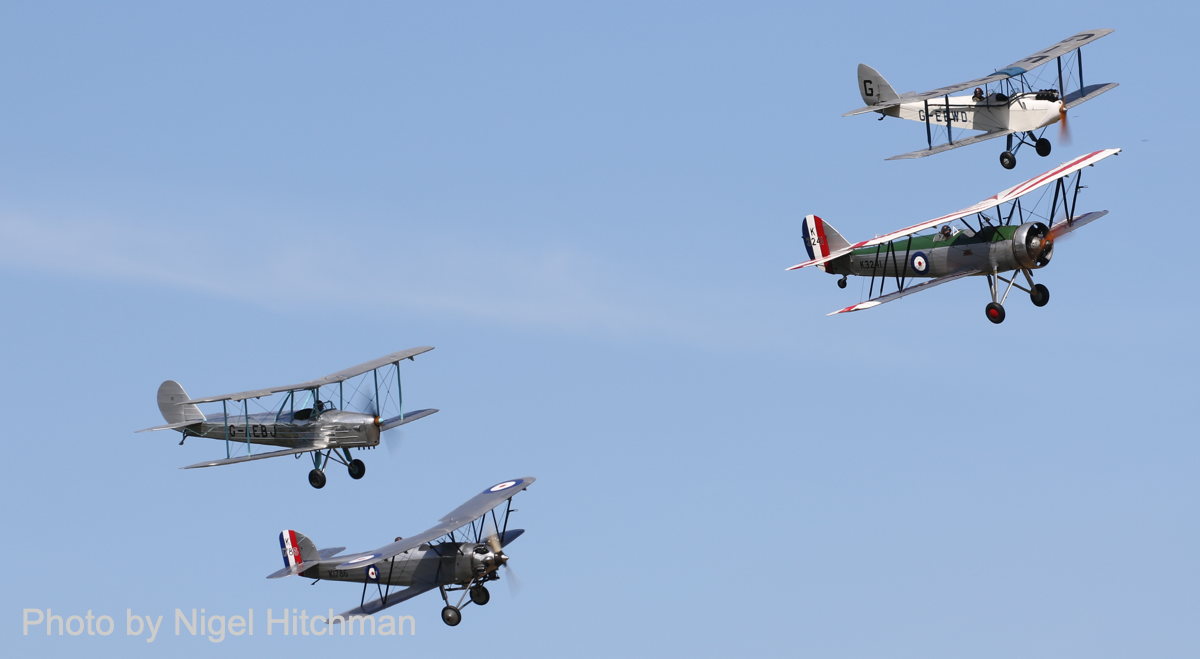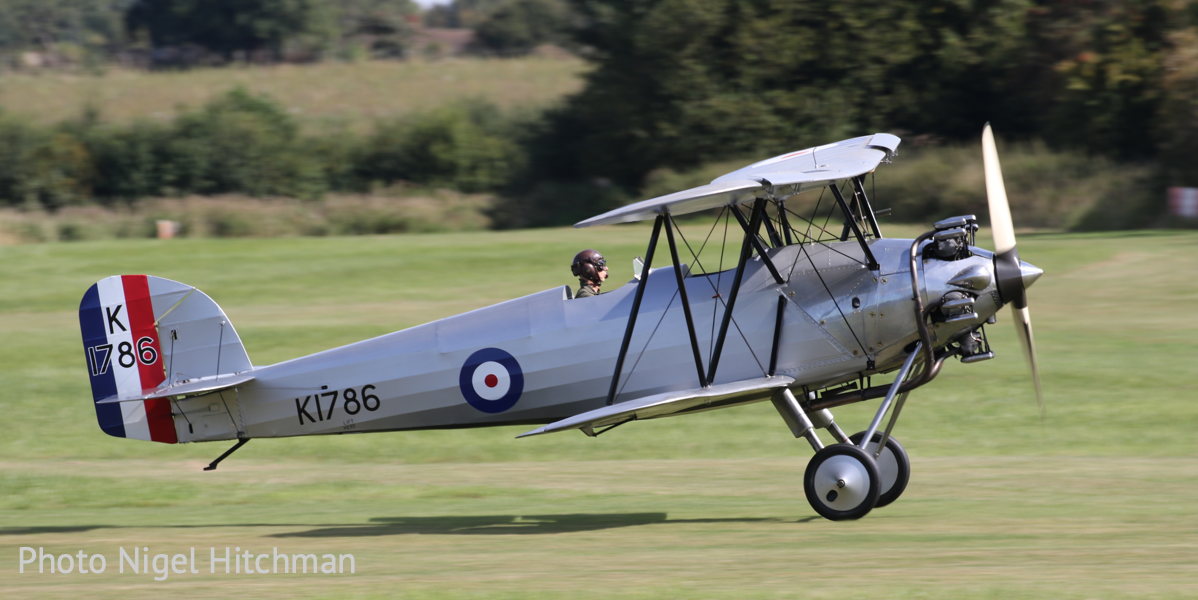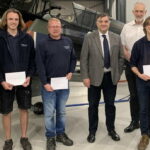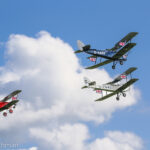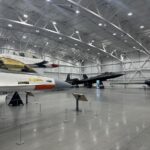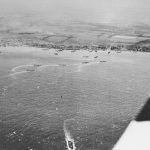By Nigel Hitchman
The UK airshow season got off to a fantastic start at The Shuttleworth Collection at Old Warden on Sunday, May 12. With warm sunny weather and a fantastic line-up of aircraft, we were really in for a treat. The crowds flocked in and I’m told there were more spectators than at any of the Shuttleworth airshows last year.
There were many highlights, but for a lot of people, the first appearance of Historic Aircraft Collection’s Hawker Fury G-CBZP/K5674 was the biggest draw. The Fury has been flying for 12 years and made a handful of appearances away from Duxford, but has never been to Old Warden, which is the ideal place to display it with the sun behind the crowd and the curved display line allowing it to be shown off to its best. We weren’t disappointed and Clive Denney did a great job flying it for several passes before departing back to Duxford. So much better than the other places I’ve seen it while staring into the sun and the aircraft much further away.
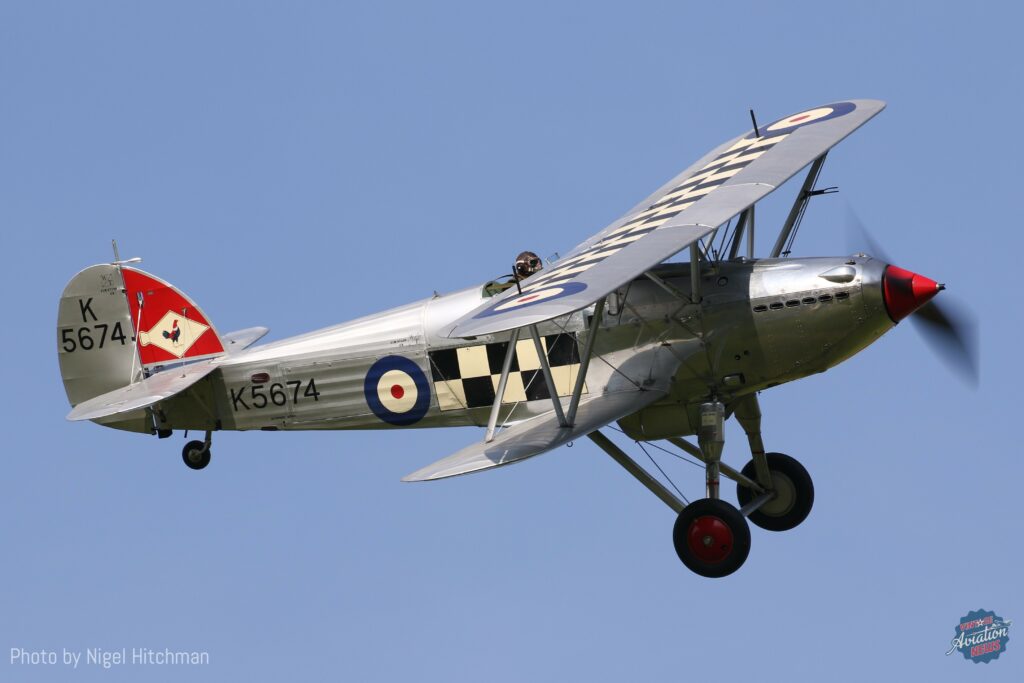
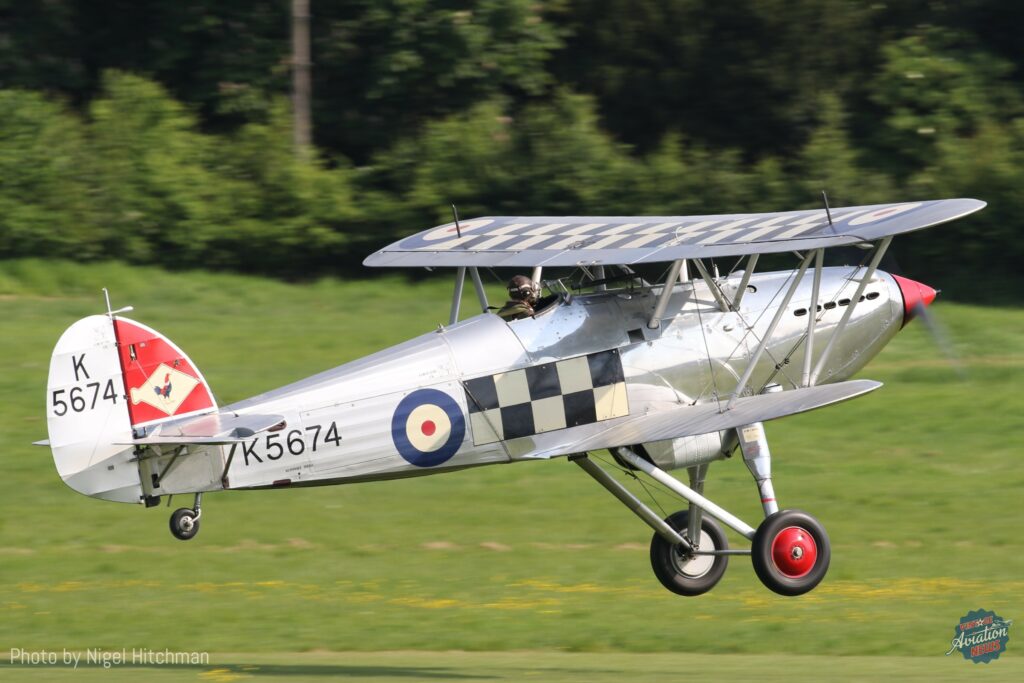
Another favorite coming from Duxford was ARCo’s Bristol Blenheim Mk.1 G-BPIV/L6739, which was superbly displayed by John Romain, firstly in a Bristol Mercury formation, with the similarly engined Gloster Gladiator and Westland Lysander from the Shuttleworth collection and then solo. This was an outstanding display done perfectly; the formation came in from the left side of the crowd and banked around the control tower and along the display line. This gave the crowd a superb topside view with the sun on them, which works so much better than when formations come in from the right where we are looking into the sun until later in the afternoon. It’s these little things that make a great display, as well as the great imagination from the Shuttleworth display organizers getting such formations together. The Blenheim then did a superb solo display showing off the aircraft well, followed by some similarly great flypasts by the Gladiator and Lysander.
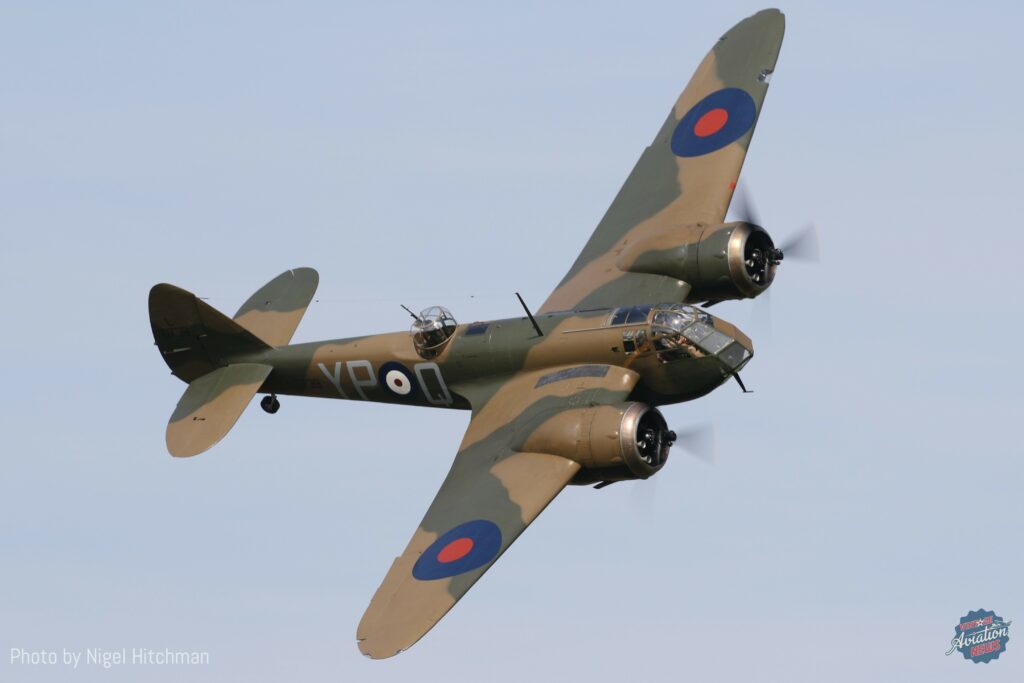
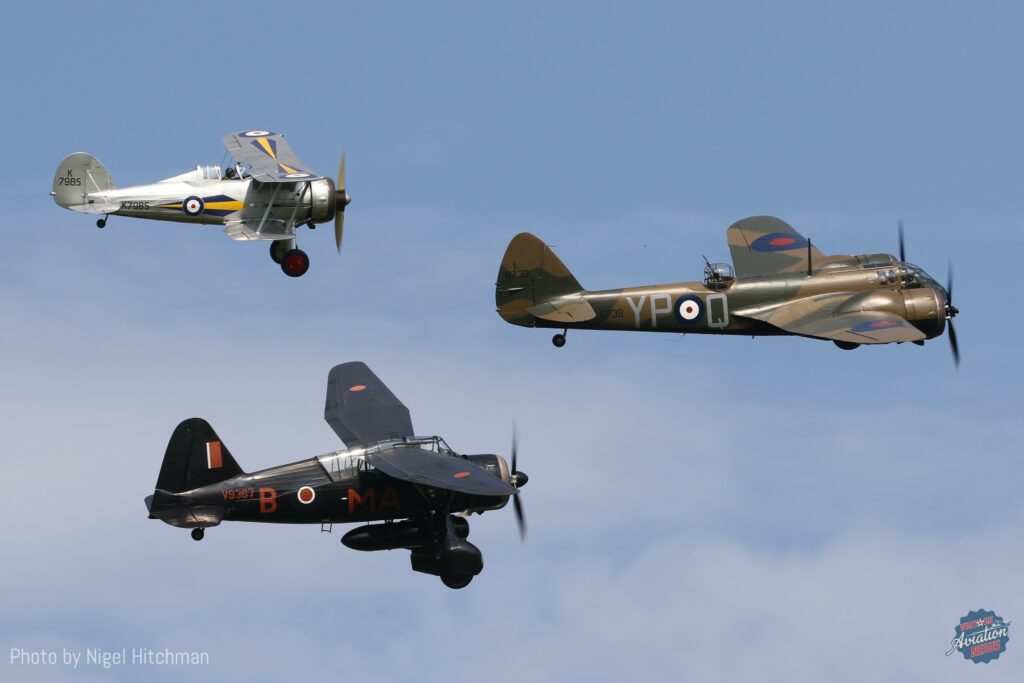
Taking off after the Bristol Mercury trio was another Bristol-engined aircraft, the Fairey Swordfish TSR Mk.1 G-BMGC/W5856 of Navy Wings, so with this Pegasus engine aircraft we had four Bristol-powered aircraft in the air at once which is a rarity.
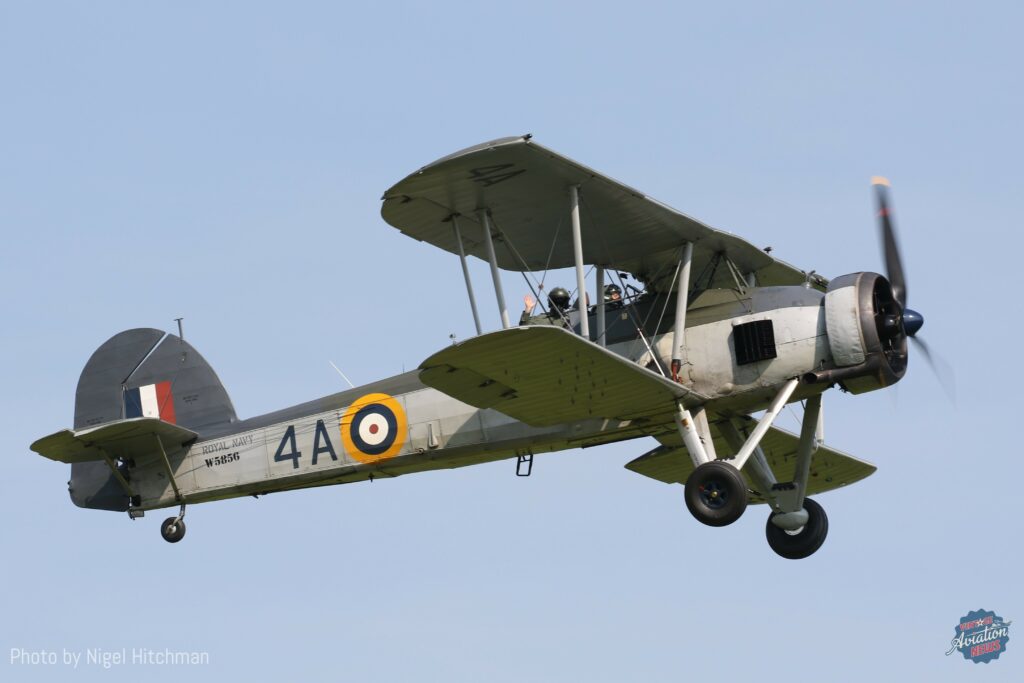
The Show started with three flypasts from the Battle Of Britain Memorial Flight Hawker Hurricane IIc LF363, believed to have been the last Hurricane to be delivered to the RAF in 1944. It was a little high and distant as they haven’t completed their full display authorization yet, so we look forward to seeing many BBMF aircraft close up as the season progresses.
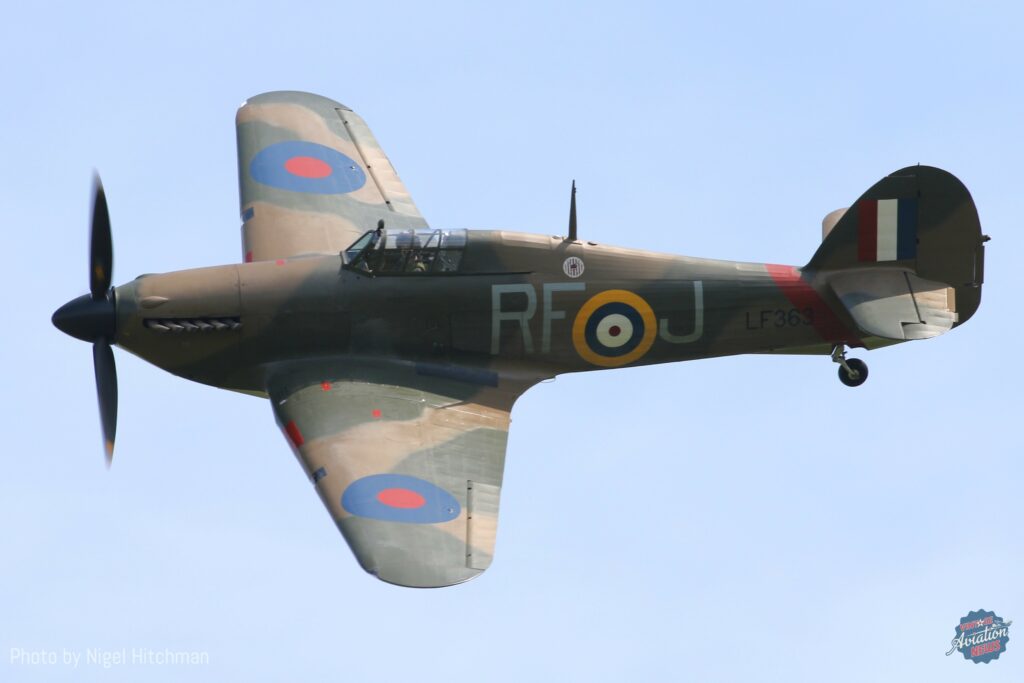
Next was a de Havilland “cavalcade”, one of the most famous British manufacturers, de Havilland built everything from famous training aircraft to jet fighters, the fabulous Mosquito wooden bomber, and passenger airliners including the world’s first commercial jet airliner the Comet. Today we were treated to a stream take-off and then a formation of three civilian aircraft, G-EBIR the DH.51 the oldest flying de Havilland in the UK, G-EBWD the DH60X Cirrus Moth, Richard Shuttleworth’s original aircraft bought in 1932 and based at Old Warden ever since and the Woods’ brothers DH80A Puss Moth G-AEOA making its first airshow appearance in 25 plus years. While these did several passes in formation and then tail chasing a de Havilland Canada DHC-1 Chipmunk performed aerobatics overhead. Once these had landed we had the usual superb display by Dodge Bailey in the “jewel in the crown” Shuttleworth’s DH88 Comet Racer G-ACSS the winner of the Mildenhall, England to Melbourne, Australia MacRobertson trophy air race in 1934. There was a fickle crosswind and it was interesting to see Dodge’s first landing attempt given away when caught by a gust just before touchdown and to come back and make a perfect landing the second time. Dodge gives a great talk on the flight testing of the Comet Racer when they got it flying again and how they need to be careful to get the landing right and always ready to go around. Interestingly it doesn’t mind crosswinds, what they don’t like is no wind at all. We should have also seen a de Havilland Vampire T.11, but this was sadly withdrawn a few days before due to unserviceability.
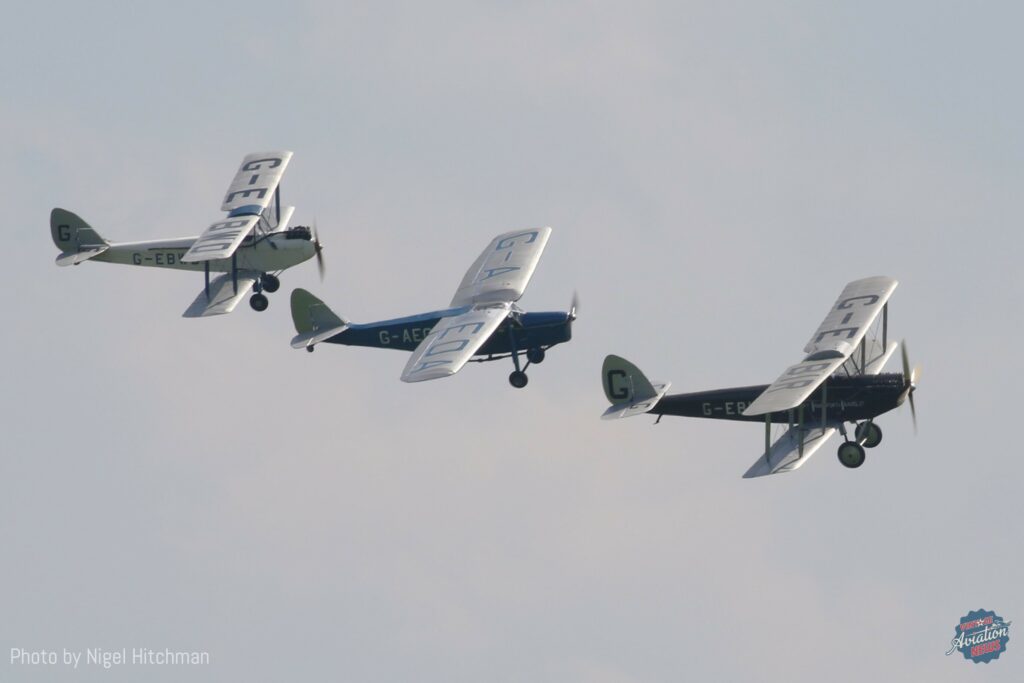
Then we moved on to two more modern aircraft, the Shuttleworth collection Percival Provost T.1 G-KAPW/XF603 and the jet trainer developed from it the Hunting Percival Jet Provost T3A G-BVEZ/XM479 operated by the Newcastle Jet Provost group, both gave nice displays and it was particularly good to see the Jet Provost make the best of the curved display line while following the CAA constraints on jet displays.
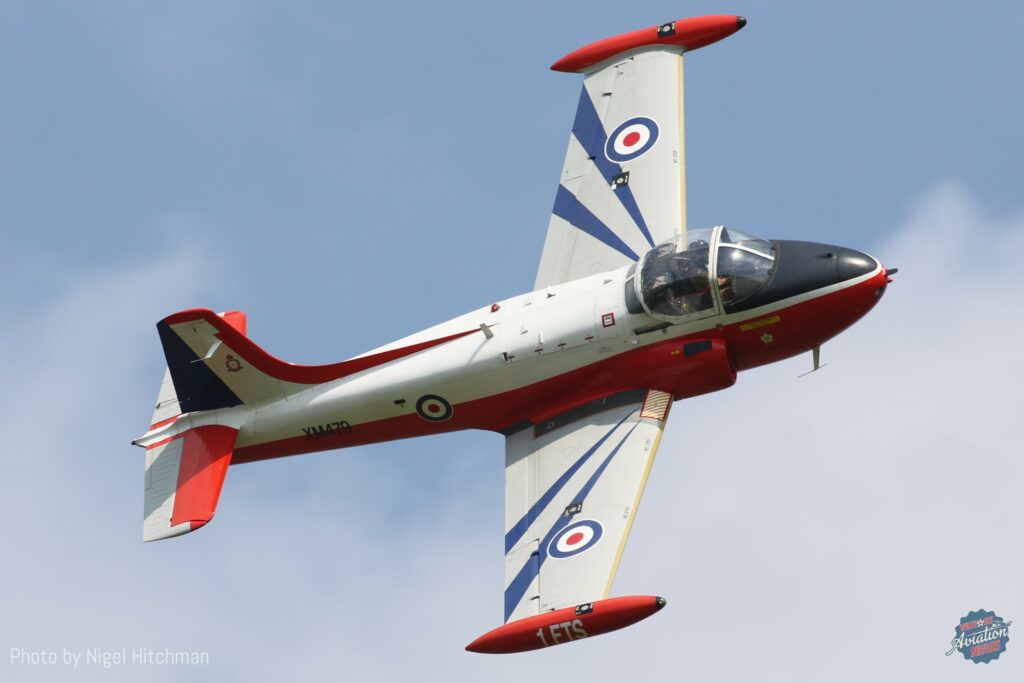
One of the great things about Shuttleworth displays is seeing rare civilian aircraft flying that you never see anywhere else, today we saw the 1932 Parnall Elf II G-AAIN the only complete aircraft still in existence built by the Parnall company near Bristol started aircraft manufacturing in WWI building Avro 504s, several Parnall aircraft were designed and built, but none were very successful or produced in numbers. Parnall had a large factory building gun turrets for many aircraft during WWII, producing over 20,000.
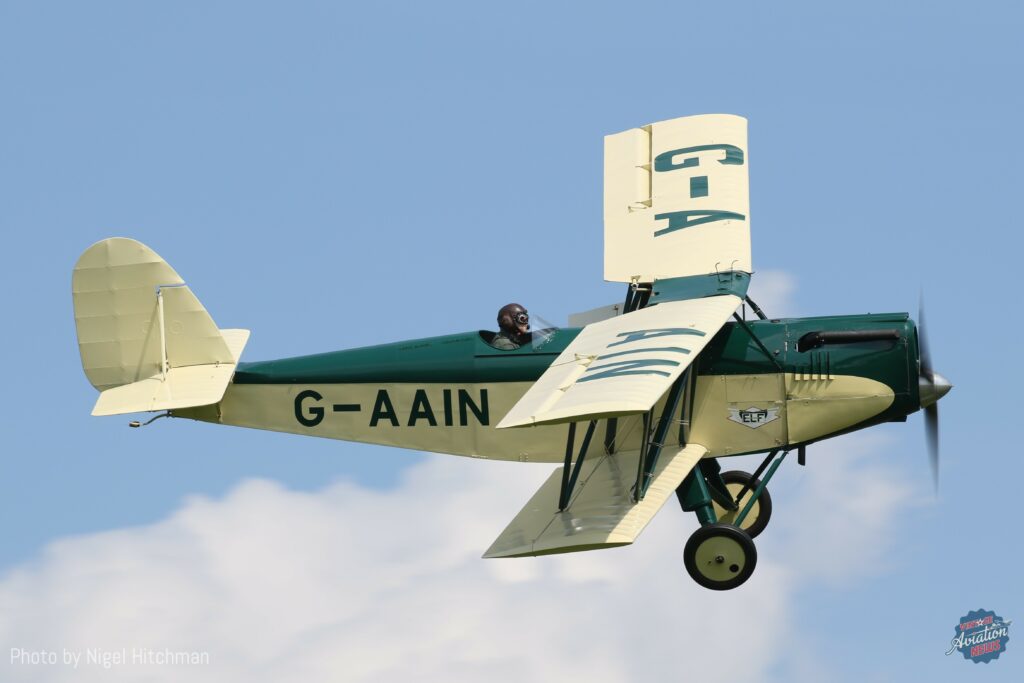
Vintage gliders have proven a very popular addition to Shuttleworth displays over the years and we were treated to Graham Saw flying his beautifully restored Slingsby Petrel BGA651. The Petrel design was based on the popular German Schleicher Rhonadler built in the 1930s. The first Petrel was built in 1938 but sadly crashed during the British gliding championships in 1939, only two more were built and both survive today, the other having been bought by an American in the early 2000s and fully restored, now flying with the WAAM collection at Hood River, Oregon.
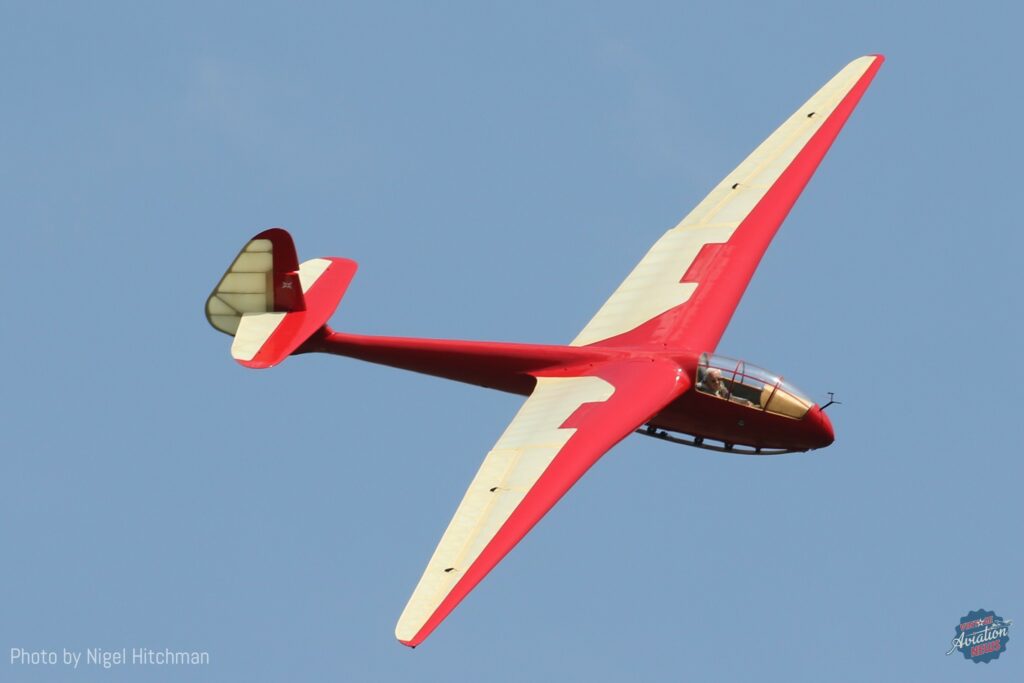
It was also great later to see the EoN Primary glider also being flown by Graham Saw, these were built in the late 1940s by Elliots of Newbury and also as the Slingsby Grasshopper, but are copies of the 1930s German SG38 Schulglieter.
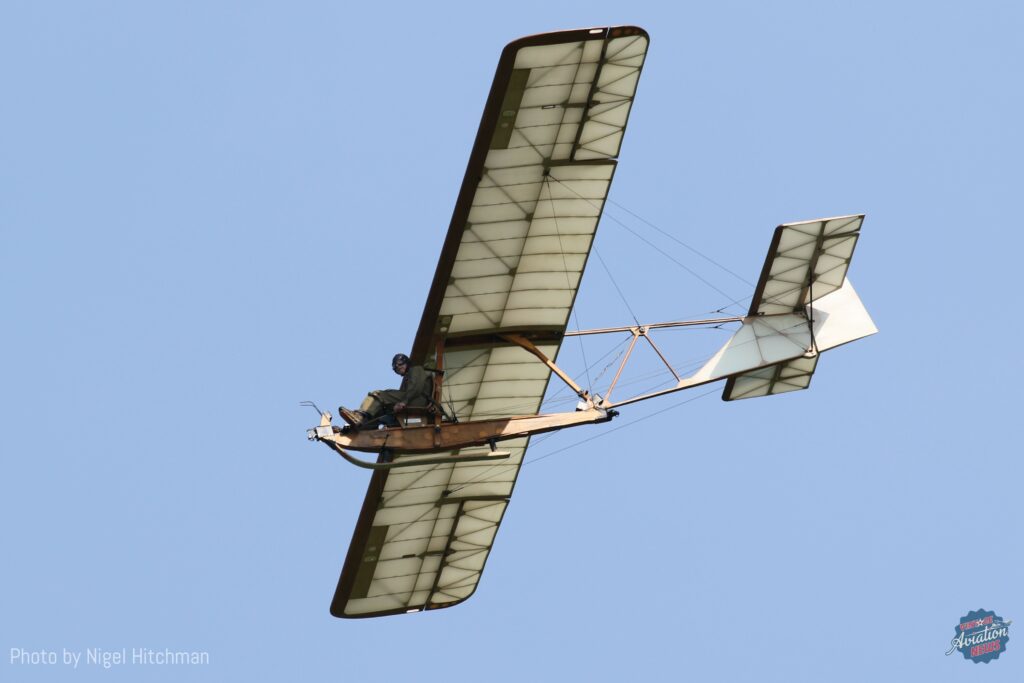
Shuttleworth has a fabulous collection of WWI aircraft and is also probably the best place in the world to see rotary engine aircraft regularly flown (perhaps equaled by TVAL at Masterton NZ) with five rotary engine aircraft flying today.
The first WWI sequence started with the Shuttleworth Collection’s combat veteran RAE SE5A G-EBIR/F904 taking to the skies, followed by the collection’s Avro 504K G-ADEV/E3273 and then David Bremner flying his superb replica Bristol Scout model C G-FDHB/1264 powered by an 80hp Le Rhone it’s painted as Royal Naval Air Service 1264, the aircraft flown by his grandfather and incorporating the control column and a couple of other parts of the original (more original parts than some aircraft considered to be original!)
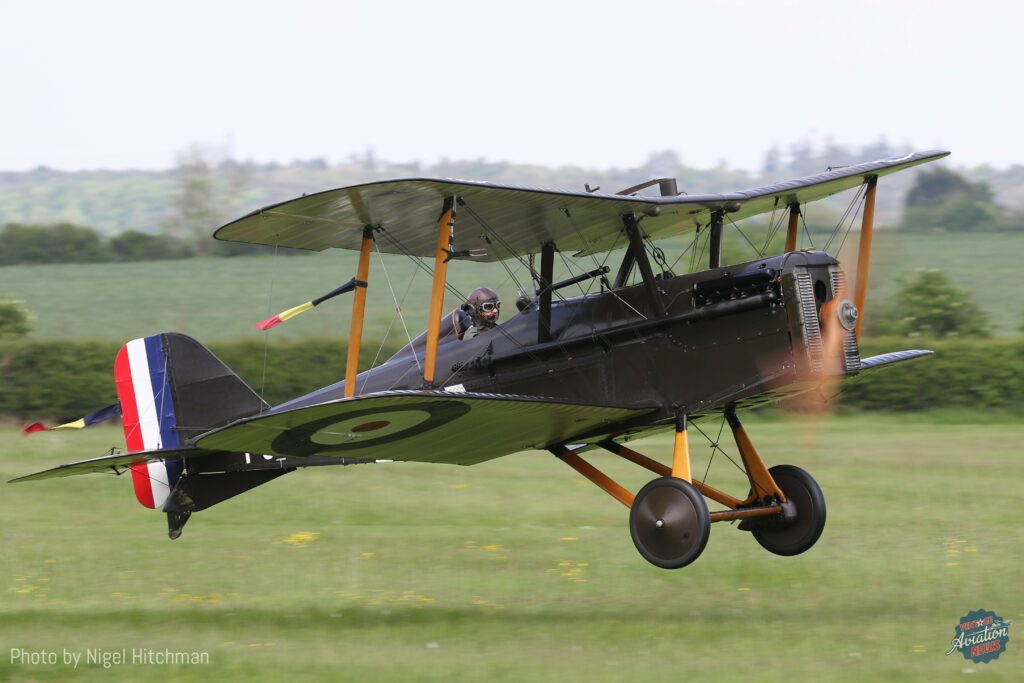
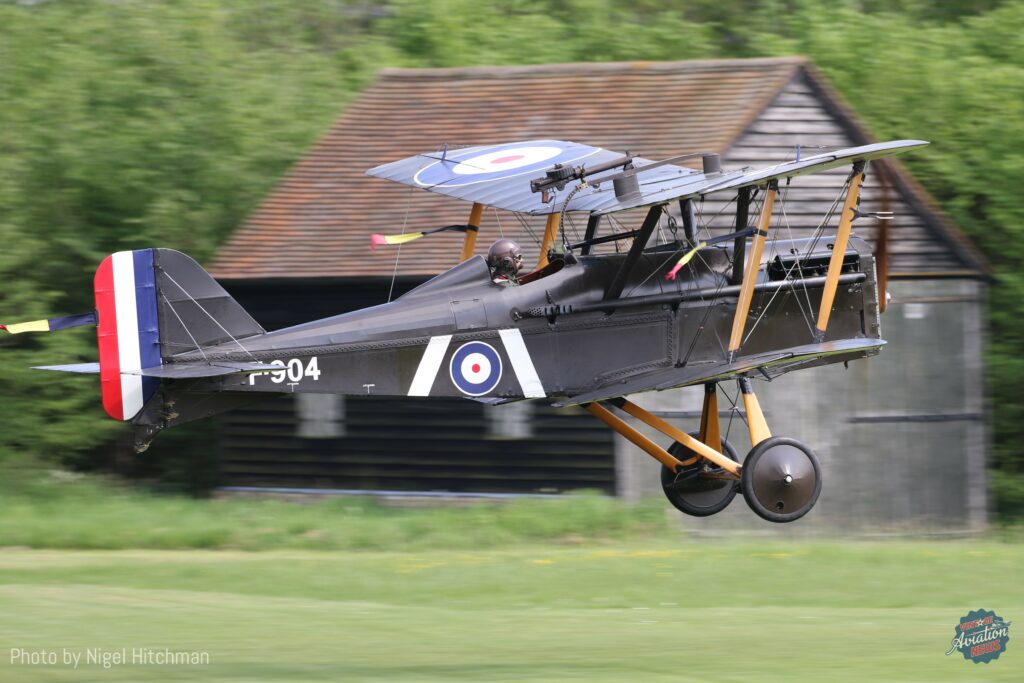
The Comper CLA.7 Swift was a famous sport and racing aircraft in the 30s powered by the Pobjoy Niagara geared radial engine, G-ACTF started its life air racing in India after being built in 1932 but returned to England in 1934 and has been flying here most of the times since. Several Swifts survive in England and two in Australia, plus two replicas flying in England and one in the US with others under construction.
The second WWI display was all rotary engine Sopwith aircraft with Andrew Wood’s Sopwith Dove replica G-EAGA leading, although an engine issue meant this was only airborne momentarily before landing on the runway again (it may not have even left the ground) followed by the Collection’s original Sopwith Pup G-EBKY/9917 (which was built as a two-seat Dove, but converted to a Pup in the 30s) and the Collections Sopwith Triplane G-BOCK/N6290 which was built by the Northern Aeroplane workshops and signed off as an original by Tommy Sopwith.
The Shuttleworth Collections Avro 19 (Anson) gave a spirited display flown by chief engineer Jean Munn.
A very interesting flypast in tribute to Alex Henshaw comprised Henshaw’s Percival Mew Gull G-AEXF (now owned by the Shuttleworth Collection) which he famously broke the London to Cape Town and return record in 1939 a record that stood for 70 years and the collection’s Spitfire V AR501 as a representative of one of the many Spitfires Henshaw test flew during WWII (it said he test flew around 10 percent of the total production). The collection’s 1928 Hawker Tomtit G-AFTA which Henshaw used to commute to work during the war was also scheduled to fly in tribute but became unserviceable.
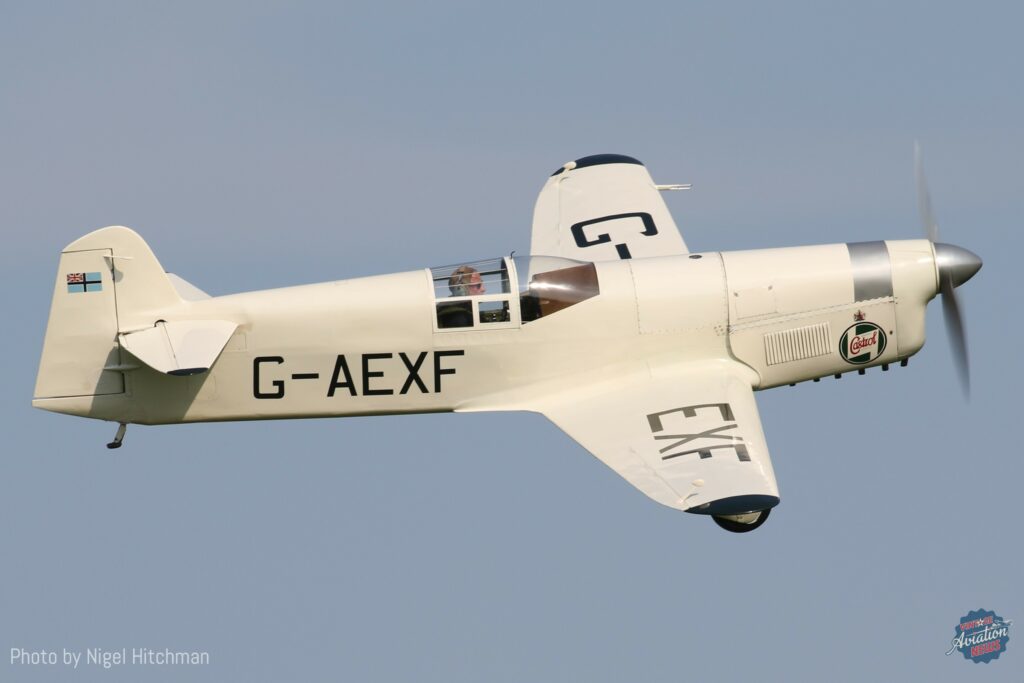
The final display was a fabulous demonstration by Nick Smith in Fighter Aviation Engineering’s Spitfire XIV G-SPIT/MV293 operating from Duxford in only its second public display since being restored and repainted in its original Royal Indian Air Force colors which stood out in the late afternoon sunshine.
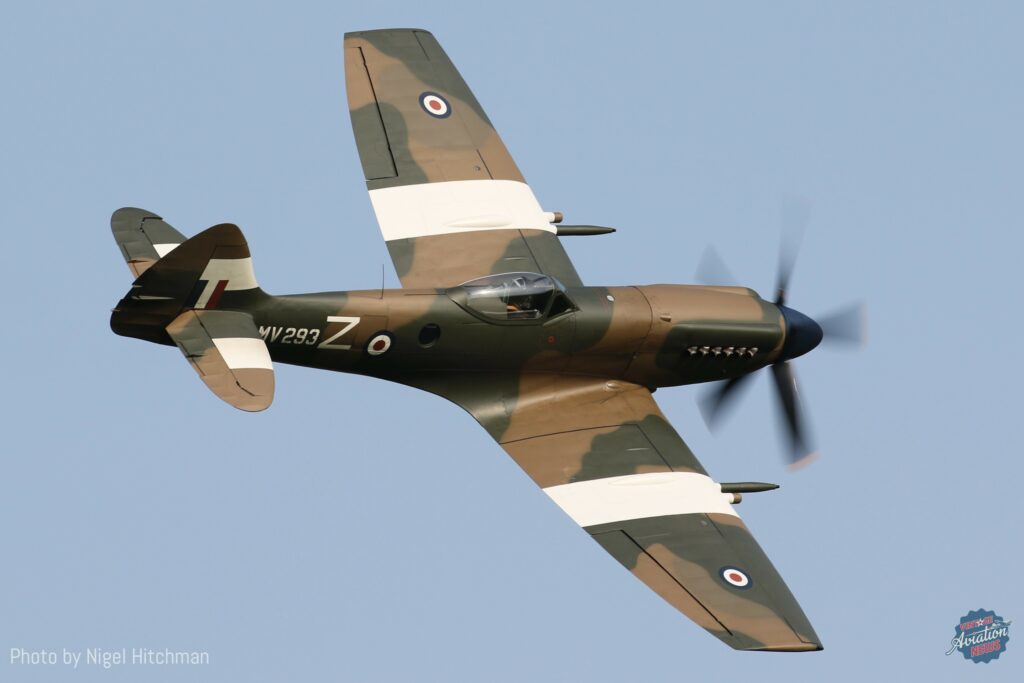
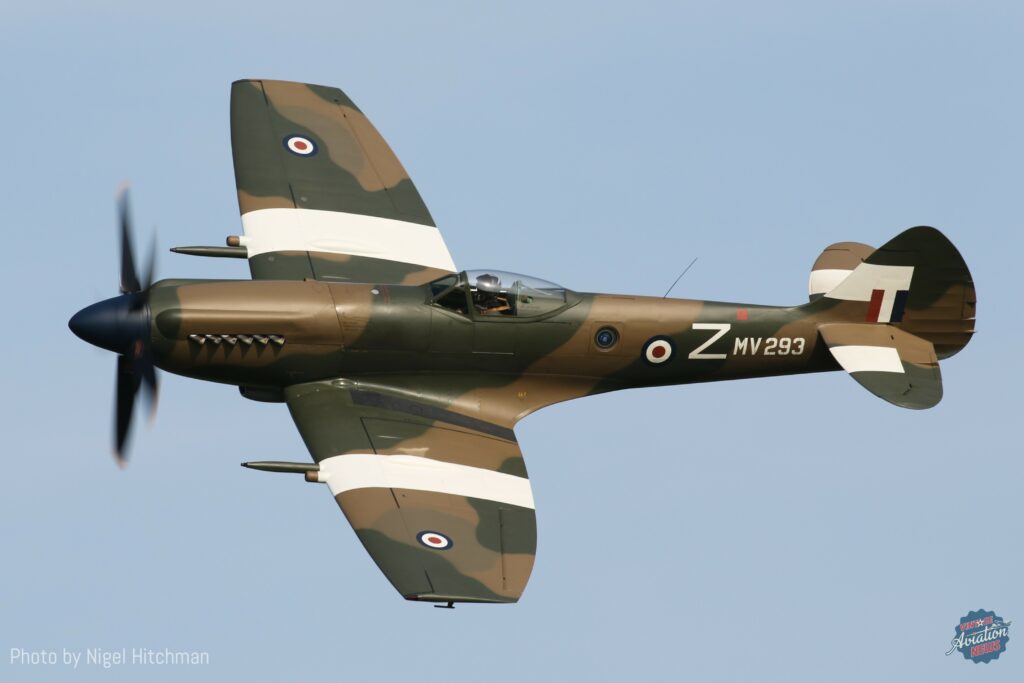
Several of the Shuttleworth Collection’s “Edwardian” (pre-WWI) aircraft were due to fly, weather permitting, but what had been a tricky crosswind for some was far too strong for the Edwardians so they remained safely in the hangars. A pity it hadn’t been an evening display as an hour after the end of the display the wind died down completely and they may have been able to fly!
A fabulous start to the season, we now look forward to further displays at Shuttleworth, the next being the “Military” display on 2 June, followed by the more vintage aircraft orientated “Festival of Flight” 3-day weekend and vintage fly-in on June 28-30 with an evening display on 28th and further afternoon displays on 29th and 30th.







